|
When you think of rationing in World War II, you may not think of peanuts, but they played an outsized role in acting as a substitute for a lot of otherwise tough-to-find foodstuffs, mainly other vegetable fats. When the United States entered the war in December, 1941, after the Japanese attack on Pearl Harbor, the dynamic of trade in the Pacific changed dramatically. The United States had come to rely on cocoanut oil from the then-American colonial territory of the Philippines and palm oil from Southeast Asia for everything from cooking and the production of foods like margarine to the manufacture of nitroglycerine and soap. Vegetable oils like coconut, palm, and cottonseed were considered cleaner and more sanitary than animal fats, which had previously been the primary ingredient in soap, shortening, and margarine. But when the Pacific Ocean became a theater of war, all but domestic vegetable oils were cut off. Cottonseed was still viable, but it was considered a byproduct of the cotton industry, not an product in and of itself, and therefore difficult to expand production. Soy was growing in importance, but in 1941 production was low. That left a distinctly American legume - the peanut. Peanuts are neither a pea nor a nut, although like peas they are a legume. Unlike peas, the seed pods grow underground, in tough papery shells. Native to the eastern Andes Mountains of South America, they were likely introduced to Europe by the Spanish. European colonizers then also introduced them to Africa and Southeast Asia. In West Africa, peanuts largely replaced a native groundnut in local diets. They were likely imported to North America by enslaved people from West Africa (where peanut production may have prolonged the slave trade). Peanuts became a staple crop in the American South largely as a foodstuff for enslaved people and livestock, but the privations of White middle and upper classes during the American Civil War expanded the consumption of peanuts to all levels of society. Union soldiers encountered peanuts during the war and liked the taste. The association of hot roasted peanuts with traveling circuses in the latter half of the 19th century and their use in candies like peanut brittle also helped improve their reputation. Peanuts are high in protein and fats, and were often used as a meat substitute by vegetarians in the late 19th century. Peanut loaf, peanut soup, and peanut breads were common suggestions, although grains and other legumes still held ultimate sway. George Washington Carver helped popularize peanuts as a crop in the early 20th century. Peanuts are legumes and thus fix nitrogen to the soil. With the cultivation of sweet potatoes, Carver saw peanuts as a way to restore soil depleted by decades of cotton farming, giving Black farmers a way to restore the health of their land while also providing nutritious food for their families and a viable cash crop. During the First World War, peanut production expanded as peanut oil was used to make munitions and peanuts were a recommended ration-friendly food. But it was consumer's love of the flavor and crunch of roasted peanuts that really drove post-war production. By the 1930s, the sale of peanuts had skyrocketed. No longer the niche boiled snack food of Southerners or ground into meal for livestock, peanuts were everywhere. Peanut butter and jelly (and peanut butter and mayonnaise) became popular sandwich fillings during the Great Depression. Roasted peanuts gave popcorn a run for its money at baseball games and other sporting events. Peanut-based candy bars like Baby Ruth and Snickers were skyrocketing in sales. And roasted, salted, shelled peanuts were replacing the more expensive salted almonds at dinner parties and weddings. Peanuts were even included as a "basic crop" in attempts by the federal government to address agricultural price control. They were included in the 1929 Agricultural Marketing Act, the Agricultural Adjustment Act of 1933, and an April, 1941 amendment to the Agricultural Adjustment Act of 1938. Peanuts were included in farm loan support and programs to ensure farmers got a share of defense contracts. By the U.S. entry into World War II, most peanuts were being used in the production of peanut butter. And while Americans enjoyed them as a treat, their savory applications were ultimately less popular as an everyday food. But their use as source of high-quality oil was their main selling point during the Second World War. Peanut oil was the primary fuel in Rudolf Diesel's first engine, which debuted in 1900 at the Paris World's Fair. Its very high smoke point has made it a favorite of cooks around the world. During the Second World War peanut oil was used to produce margarine, used in salad dressings and as a butter and lard substitute in cooking and frying. But like other fats, its most important role was in the production of glycerin and nitroglycerine - a primary component in explosives. Which brings us to our imagery in the above propaganda poster. "Mr. Peanut Goes to War!" the poster cries. Produced by the United States Department of Agriculture, it features an anthropomorphized peanut in helmet and fatigues, carrying a rifle, bayonet fixed, marching determinedly across a battlefield, with a tank in the background. Likely aimed at farmers instead of ordinary households, Mr. Peanut of the USDA was nothing like the monocled, top-hatted suave character Planter's introduced in 1916. This Mr. Peanut was tough, determined to do his part, and aid in the war effort. The USDA expected farmers (including African American farmers) to do the same. Further Reading: Note: Amazon purchases from these links help support The Food Historian.
The Food Historian blog is supported by patrons on Patreon! Patrons help keep blog posts like this one free and available to the public. Join us for awesome members-only content like free digitized cookbooks from my personal collection, e-newsletter, and even snail mail from time to time! Don't like Patreon? Leave a tip!
0 Comments
The short answer? At least in the United States? Yes. Let's look at the history and the reasons why. I post a lot of propaganda posters for World War Wednesday, and although it is implied, I don't point out often enough that they are just that - propaganda. They are designed to alter peoples' behavioral patterns using a combination of persuasion, authority, peer pressure, and unrealistic portrayals of culture and society. In the last several months of sharing propaganda posters on social media for World War Wednesday, I've gotten a couple of comments on how much they reflect an exclusively White perspective. Although White Anglo-Saxon Protestant culture was the dominant culture in the United States at the time, it was certainly not the only culture. And its dominance was the result of White supremacy and racism. This is reflected in the nutritional guidelines and nutrition science research of the time. The First World War takes place during the Progressive Era under a president who re-segregated federal workplaces that had been integrated since Reconstruction. It was also a time when eugenics was in full swing, and the burgeoning field of nutrition science was using racism as justifications for everything from encouraging assimilation among immigrant groups by decrying their foodways and promoting White Anglo-Saxon Protestant foodways like "traditional" New England and British foods to encouraging "better babies" to save the "White race" from destruction. Nutrition science research with human subjects used almost exclusively adult White men of middle- and upper-middle class backgrounds - usually in college. Certain foods, like cow's milk, were promoted heavily as health food. Notions of purity and cleanliness also influenced negative attitudes about immigrants, African Americans, and rural Americans. During World War II, Progressive-Era-trained nutritionists and nutrition scientists helped usher in a stereotypically New England idea of what "American" food looked like, helping "kill" already declining regional foodways. Nutrition research, bolstered by War Department funds, helped discover and isolate multiple vitamins during this time period. It's also when the first government nutrition guidelines came out - the Basic 7. Throughout both wars, the propaganda was focused almost exclusively on White, middle- and upper-middle-class Americans. Immigrants and African Americans were the target of some campaigns for changing household habits, usually under the guise of assimilation. African Americans were also the target of agricultural propaganda during WWII. Although there was plenty of overt racism during this time period, including lynching, race massacres, segregation, Jim Crow laws, and more, most of the racism in nutrition, nutrition science, and home economics came in two distinct types - White supremacy (that is, the belief that White Anglo-Saxon Protestant values were superior to every other ethnicity, race, and culture) and unconscious bias. So let's look at some of the foundations of modern nutrition science through these lenses. Early Nutrition ScienceNutrition Science as a field is quite young, especially when compared to other sciences. The first nutrients to be isolated were fats, carbohydrates, and proteins. Fats were the easiest to determine, since fat is visible in animal products and separates easily in liquids like dairy products and plant extracts. The term "protein" was coined in the 1830s. Carbohydrates began to be individually named in the early 19th century, although that term was not coined until the 1860s. Almost immediately, as part of nearly any early nutrition research, was the question of what foods could be substituted "economically" for other foods to feed the poor. This period of nutrition science research coordinated with the Enlightenment and other pushes to discover, through experimentation, the mechanics of the universe. As such, it was largely limited to highly educated, White European men (although even Wikipedia notes criticism of such a Euro-centric approach). As American colleges and universities, especially those driven by the Hatch Act of 1877, expanded into more practical subjects like agriculture, food and nutrition research improved. American scientists were concerned more with practical applications, rather than searching for knowledge for knowledge's sake. They wanted to study plant and animal genetics and nutrition to apply that information on farms. And the study of human nutrition was not only to understand how humans metabolized foods, but also to apply those findings to human health and the economy. But their research was influenced by their own personal biases, conscious and unconscious. The History of Body Mass Index (BMI)Body Mass Index, or BMI, is a result of that same early 19th century time period. It was invented by Belgian mathematician Lambert Adolphe Jacques Quetelet in the 1830s and '40s specifically as a "hack" for determining obesity levels across wide swaths of population, not for individuals. Quetelet was a trained astronomist - the one field where statistical analysis was prevalent. Quetelet used statistics as a research tool, publishing in 1835 a book called Sur l'homme et le développement de ses facultés, ou Essai de physique sociale, the English translation of which is usually called A Treatise on Man and the Development of His Faculties. In it, he discusses the use of statistics to determine averages for humanity (mainly, White European men). BMI became part of that statistical analysis. Quetelet named the index after himself - it wasn't until 1972 that researcher Ancel Keys coined the term "Body Mass Index," and as he did so he complained that it was no better or worse than any other relative weight index. Quetelet's work went on to influence several famous people, including Francis Galton, a proponent of social Darwinism and scientific racism who coined the term "eugenics," and Florence Nightingale, who met him in person. As a tool for measuring populations, BMI isn't bad. It can look at statistical height and weight data and give a general idea of the overall health of population. But when it is used as a tool to measure the health of individuals, it becomes extremely flawed and even dangerous. Quetelet had to fudge the math to make the index work, even with broad populations. And his work was based on White European males who he considered "average" and "ideal." Quetelet was not a nutrition scientist or a doctor - this "ideal" was purely subjective, not scientific. Despite numerous calls to abandon its use, the medical community continues to use BMI as a measure of individual health. Because it is a statistical tool not based on actual measures of health, BMI places people with different body types in overweight and obese categories, even if they have relatively low body fat. It can also tell thin people they are healthy, even when other measurements (activity level, nutrition, eating disorders, etc.) are signaling an unhealthy lifestyle. In addition, fatphobia in the medical community (which is also based on outdated ideas, which we'll get to) has vilified subcutaneous fat, which has less impact on overall health and can even improve lifespans. Visceral fat, or the abdominal fat that surrounds your organs, can be more damaging in excess, which is why some scientists and physicians advocate for switching to waist ratio measurements. So how is this racist? Because it was based on White European male averages, it often punishes women and people of color whose genetics do not conform to Quetelet's ideal. For instance, people with higher muscle mass can often be placed in the "overweight" or even "obese" category, simply because BMI uses an overall weight measure and assumes a percentage of it is fat. Tall people and people with broader than "ideal" builds are also not accurately measured. The History of the CalorieAlthough more and more people are moving away from measuring calories as a health indicator, for over 100 years they have reigned as the primary measure of food intake efficiency by nutritionists, doctors, and dieters alike. The calorie is a unit of heat measurement that was originally used to describe the efficiency of steam engines. When Wilbur Olin Atwater began his research into how the human body metabolizes food and produces energy, he used the calorie to measure his findings. His research subjects were the White male students at Wesleyan University, where he was professor. Atwater's research helped popularize the idea of the calorie in broader society, and it became essential learning for nutrition scientists and home economists in the burgeoning field - one of the few scientific avenues of study open to women. Atwater's research helped spur more human trials, usually "Diet Squads" of young middle- and upper-middle-class White men. At the time, many papers and even cookbooks were written about how the working poor could maximize their food budgets for effective nutrition. Socialists and working class unionists alike feared that by calculating the exact number of calories a working man needed to survive, home economists were helping keep working class wages down, by showing that people could live on little or inexpensive food. Calculating the calories of mixed-food dishes like casseroles, stews, pilafs, etc. was deemed too difficult, so "meat and three" meals were emphasized by home economists. Making "American" FoodEfforts to Americanize and assimilate immigrants went into full swing in the late 19th and early 20th centuries as increasing numbers of "undesirable" immigrants from Ireland, southern Italy, Greece, the Middle East, China, Eastern Europe (especially Jews), Russia, etc. poured into American cities. Settlement workers and home economists alike tried to Americanize with varying degrees of sensitivity. Some were outright racist, adopting a eugenics mindset, believing and perpetuating racist ideas about criminology, intelligence, sanitation, and health. Others took a more tempered approach, trying to convince immigrants to give up the few things that reminded them of home - especially food. These often engaged in the not-so-subtle art of substitution. For instance, suggesting that because Italian olive oil and butter were expensive, they should be substituted with margarine. Pasta was also expensive and considered to be of dubious nutritional value - oatmeal and bread were "better." A select few realized that immigrant foodways were often nutritionally equivalent or even superior to the typical American diet. But even they often engaged in the types of advice that suggested substituting familiar ingredients with unfamiliar ones. Old ideas about digestion also influenced food advice. Pickled vegetables, spicy foods, and garlic were all incredibly suspect and scorned - all hallmarks of immigrant foodways and pushcart operators in major American cities. The "American" diet advocated by home economists was highly influenced by Anglo-Saxon and New England ideals - beef, butter, white bread, potatoes, whole cow's milk, and refined white sugar were the nutritional superstars of this cuisine. Cooking foods separately with few sauces (except white sauce) was also a hallmark - the "meat and three" that came to dominate most of the 20th century's food advice. Rooted in English foodways, it was easy for other Northern European immigrants to adopt. Although French haute cuisine was increasingly fashionable from the Gilded Age on, it was considered far out of reach of most Americans. French-style sauces used by middle- and lower-class cooks were often deemed suspect - supposedly disguising spoiled meat. Post-Civil War, Yankee New England foodways were promoted as "American" in an attempt to both define American foodways (which reflected the incredibly diverse ecosystems of the United States and its diverse populations) and to unite the country after the Civil War. Sarah Josepha Hale's promotion of Thanksgiving into a national holiday was a big part of the push to define "American" as White and Anglo-Saxon. This push to "Americanize" foodways also neatly ignores or vilifies Indigenous, Asian-American, and African American foodways. "Soul food," "Chinese," and "Mexican" are derided as unhealthy junk food. In fact, both were built on foundations of fresh, seasonal fruits, vegetables, and whole grains. But as people were removed from land and access to land, the they adapted foodways to reflect what was available and what White society valued - meat, dairy, refined flour, etc. Asian food in particular was adapted to suit White palates. We won't even get into the term "ethnic food" and how it implies that anything branded as such isn't "American" (e.g. White). Divorcing foodways from their originators is also hugely problematic. American food has a big cultural appropriation problem, especially when it comes to "Mexican" and "Asian" foods. As late as the mid-2000s, the USDA website had a recipe for "Oriental salad," although it has since disappeared. Instead, we get "Asian Mango Chicken Wraps," and the ingredients of mango, Napa cabbage, and peanut butter are apparently what make this dish "Asian," rather than any reflection of actual foodways from countries in Asia. Milk - The Perfect FoodCombining both nutrition research of the 19th century and also ideas about purity and sanitation, whole cow's milk was deemed by nutrition scientists and home economists to be "the perfect food" - as it contained proteins, fats, and carbohydrates, all in one package. Despite issues with sanitation throughout the 19th century (milk wasn't regularly pasteurized until the 1920s), milk became a hallmark of nutrition advice throughout the Progressive Era - advice which continues to this day. Throughout the history of nutritional guidelines in the U.S., milk and dairy products have remained a mainstay. But the preponderance of advice about dairy completely ignores that wide swaths of the population are lactose intolerant, and/or did not historically consume dairy the way Europeans did. Indigenous Americans, and many people of African and Asian descent historically did not consume cow's milk and their bodies often do not process it well. This fact has been capitalized upon by both historic and modern racists, as milk as become a symbol of the alt-right. Even today, the USDA nutrition guidelines continue to recommend at least three servings of dairy per day, an amount that can cause long term health problems in communities that do not historically consume large amounts of dairy. Nutrition Guidelines HistoryBecause Anglo-centric foodways were considered uniquely "American" and also the most wholesome, this style of food persisted in government nutritional guidelines. Government-issued food recommendations and recipes began to be released during the First World War and continued during the Great Depression and World War II. These guidelines and advice generally reinforced the dominant White culture as the most desirable. Vitamins were first discovered as part of research into the causes of what would come to be understood as vitamin deficiencies. Scurvy (Vitamin C deficiency), rickets (Vitamin D deficiency), beriberi (Vitamin B1 or thiamine deficiency), and pellagra (Vitamin B2 or niacin deficiency) plagued people around the world in the 19th and early 20th centuries. Vitamin C was the first to be isolated in 1914. The rest followed in the 1930s and '40s. Vitamin fortification took off during World War II. The Basic 7 guidelines were first released during the war and were based on the recent vitamin research. But they also, consciously or not, reinforced white supremacy through food. Confident that they had solved the mystery of the invisible nutrients necessary for human health, American nutrition scientists turned toward reconfiguring them every which way possible. This is the history that gives us Wonder Bread and fortified breakfast cereals and milk. By divorcing vitamins from the foods in which they naturally occur (foods that were often expensive or scarce), nutrition scientists thought they could use equivalents to maintain a healthy diet. As long as people had access to vitamins, carbohydrates, proteins, and fats, it didn't matter how they were delivered. Or so they thought. This policy of reducing foods to their nutrients and divorcing food from tradition, culture, and emotion dates back to the Progressive Era and continues to today, sometimes with disastrous consequences. Commodities & NutritionDivorcing food from culture is one government policy Indigenous people understand well. U.S. treaty violations and land grabs led to the reservation system, which forcibly removed Native people from their traditional homelands, divorcing them from their traditional foodways as well. Post-WWII, the government helped stabilize crop prices by purchasing commodity foods for use in a variety of programs operated by the United States Department of Agriculture (USDA), including the National School Lunch Program, Special Supplemental Nutrition Program for Women, Infants, and Children (WIC), and the Food Distribution Program on Indian Reservations (FDPIR) program. For most of these programs, the government purchases surplus agricultural commodities to help stabilize the market and keep prices from falling. It then distributes the foods to low-income groups as a form of food assistance. Commodity foods distributed through the FDPIR program were generally canned and highly processed - high in fat, salt, and sugar and low in nutrients. This forced reliance on commodity foods combined with generational trauma and poverty led to widespread health disparities among Indigenous groups, including diabetes and obesity. Which is why I was appalled to find this cookbook the other day. Commodity Cooking for Good Health, published by the USDA in 1995 (1995!) is a joke, but it illustrates how pervasive and long-lasting the false equivalency of vitamins and calories can be. The cookbook starts with an outline of the 1992 Food Pyramid, whose base rests on bread, pasta, cereal, and rice. It then goes to outline how many servings of each group Indigenous people should be eating, listing 2-3 servings a day for the dairy category, but then listing only nonfat dry milk, evaporated milk, and processed cheese as the dairy options. In the fruit group, it lists five different fruit juices as servings of fruit. It has a whole chapter on diabetes and weight loss as well as encouraging people to count calories. With the exception of a recipe for fry bread, one for chili, and one for Tohono O'odham corn bread, the remainder of the recipes are extremely European. Even the "Mesa Grande Baked Potatoes" are not, as one would assume from the title, a fun take on baked whole potatoes, but rather a mixture of dehydrated mashed potato flakes, dried onion soup mix, evaporated milk, and cheese. You can read the whole cookbook for yourself, but the fact of the matter is that the USDA is largely responsible for poor health on reservations, not only because it provides the unhealthy commodity foods, but also because it was founded in 1862, the height of the Indian Wars, during attempts by the federal government at genocide and successful land grabs. Although the Bureau of Indian Affairs (BIA) under the Department of the Interior was largely responsible for the reservation system, the land grant agricultural college system started by the Hatch Act was literally built on the sale of stolen land. In addition, the USDA has a long history of dispossessing Black farmers, an issue that continues to this day through the denial of farm loans. Thanks to redlining, people of color, especially Black people, often live in segregated school districts whose property taxes are inadequate to cover expenses. Many children who attend these schools are low-income, and rely on free or reduced lunch delivered through the National School Lunch Program, which has been used for decades to prop up commodity agriculture. Although school lunch nutrition efforts have improved in recent years, many hot lunches still rely on surplus commodities and provide inadequate nutrition. Issues That PersistEven today, the federal nutrition guidelines, administered by the USDA, emphasize "meat and three" style meals accompanied by dairy. And while the recipe section is diversifying, it is still all-too-often full of Americanized versions of "ethnic" dishes. Many of the dishes are still very meat- and dairy-centric, and short on fresh fruits and vegetables. Some recipes, like this one, seem straight out of 1956. The idea that traditional ingredients should be replaced with "healthy" variations, for instance always replacing white rice with brown rice or, more recently cauliflower rice, continues. Many nutritionists also push the Mediterranean Diet as the healthiest in the world, when in fact it is very similar to other traditional diets around the world where people have access to plenty of unsaturated fats, fruits and vegetables, whole grains, lean meats, etc. Even the name - the "Mediterranean Diet," implies the diets of everyone living along the Mediterranean. So why does "Mediterranean" always mean Italian and Greek food, and never Persian, Egyptian, or Tunisian food? (Hint: the answer is racism). Old ideas about nutrition, including emphasis on low-fat foods, "meat and three" style recipes, replacement ingredients (usually poor cauliflower), and artificial sweeteners for diabetics, seem hard to shake for many people. Doctors receive very little training in nutrition and hospital food is horrific, as I saw when my father-in-law was hospitalized for several weeks in 2019. As a diabetic with problems swallowing, pancakes with sugar-free syrup, sugar-free gelatin and pudding, and not much else were their solution to his needs. The modern field of nutritionists is also overwhelmingly White, and racism persists, even towards trained nutritionists of color, much less communities of color struggling with health issues caused by generational trauma, food deserts, poverty, and overwork. Our modern food system has huge structural issues that continue to today. Why is the USDA, which is in charge of promoting agriculture at home and abroad, in charge of federal nutrition programs? Commodity food programs turn vulnerable people into handy props for industrial agriculture and the economy, rather than actually helping vulnerable people. Federal crop subsidies, insurance, and rules assigns way more value to commodity crops than fruits and vegetables. This government support also makes it easy and cheap for food processors to create ultra-processed, shelf-stable, calorie-dense foods for very little money - often for less than the crops cost to produce. This makes it far cheaper for people to eat ultra-processed foods than fresh fruits and vegetables. The federal government also gives money to agriculture promotion organizations that use federal funds to influence American consumers through advertising (remember the "Got Milk?" or "The Incredible, Edible Egg" marketing? That was your taxpayer dollars at work), regardless of whether or not the foods are actually good for Americans. Nutrition science as a field has a serious study replication problem, and an even more serious communications problem. Although scientists themselves usually do not make outrageous claims about their findings, the fact that food is such an essential part of everyday life, and the fact that so many Americans are unsure of what is "healthy" and what isn't, means that the media often capitalizes on new studies to make over-simplified announcements to drive viewership. Key TakeawaysNutrition science IS a science, and new discoveries are being made everyday. But the field as a whole needs to recognize and address the flawed scientific studies and methods of the past, including their racism - conscious or unconscious. Nutrition scientists are expanding their research into the many variables that challenge the research of the Progressive Era, including gut health, environmental factors, and even genetics. But human research is expensive, and test subjects rarely diverse. Nutrition science has a particularly bad study replication problem. If the government wants to get serious about nutrition, it needs to invest in new research with diverse subjects beyond the flawed one-size-fits-all rhetoric. The field of nutrition - including scientists, medical professionals, public health officials, and dieticians - need to get serious about addressing racism in the field. Both their own personal biases, as well as broader institutional and cultural ones. Anyone who is promoting "healthy" foods needs to think long and hard about who their audience is, how they're communicating, and what foods they're branding as "unhealthy" and why. We also need to address the systemic issues in our food system, including agriculture, food processing, subsidies, and more. In particular, the government agencies in charge of nutrition advice and food assistance need to think long and hard about the role of the federal government in promoting human health and what the priorities REALLY are - human health? or the economy? There is no "one size fits all" recommendation for human health. Ever. Especially not when it comes to food. Because nutrition guidelines have problems not just with racism, but also with ableism and economics. Not everyone can digest "healthy" foods, either due to medical issues or medication. Not everyone can get adequate exercise, due to physical, mental, or even economic issues. And I would argue that most Americans are not able to afford the quality and quantity of food they need to be "healthy" by government standards. And that's wrong. Like with human health, there are no easy solutions to these problems. But recognizing that there is a problem is the first step on the path to fixing them. Further ReadingMany of these were cited in the text of the article above, but they are organized here for clarity. I have organized them based on the topics listed above. (note: any books listed below are linked as part of the Amazon Affiliate program - any purchases made from those links will help support The Food Historian's free public articles like this one). EARLY NUTRITION SCIENCE
A HISTORY OF BODY MASS INDEX (BMI)
THE HISTORY OF THE CALORIE
MAKING "AMERICAN" FOOD
MILK - THE PERFECT FOOD
NUTRITION GUIDELINES HISTORY
COMMODITIES AND NUTRITION
ISSUES THAT PERSIST
The Food Historian blog is supported by patrons on Patreon! Patrons help keep blog posts like this one free and available to the public. Join us for awesome members-only content like free digitized cookbooks from my personal collection, e-newsletter, and even snail mail from time to time! Don't like Patreon? Leave a tip!
In 1943, the USDA published the informational booklet Hunger Quits School. On December 5, 1942, President Franklin Delano Roosevelt signed an executive order creating the Food Distribution Administration, which oversaw, among other things, the school-lunch program. School lunch was influenced in part by the military draft. As many as a quarter of recruits were rejected for military service due to malnutrition. The panic around military readiness lead to many advancements in nutrition science and education of ordinary Americans about nutrition, including the development of the Basic 7 nutrition recommendations and yes, even school lunch. I've transcribed and shown the booklet in its entirety for your reading pleasure and edification. As you read you'll see how clearly school lunch programs were tied to military readiness even in the period, as well as how their execution differed in various communities. If you'd like to learn more about the history of school lunch, scroll to the bottom for reading recommendations. "Hunger has quit 93,000 schools throughout the United States where programs to provide noonday meals to students are operated by local communities in cooperation with the Food Distribution Administration. These programs are providing wholesome food to those who need it most - they are helping to build a healthy and physically fit population. Shortages of certain commodities cannot be permitted to impair the welfare of our future citizens. It is imperative that the youngsters who most need nourishing food get it in their school lunch. War adds to the urgency of the task. "A physically fit population and properly managed food supply are essential now more than ever before. Obviously, school-lunch programs are not substitutes for the courage of fighting men, for a fleet of airplanes, for guns, ships, tanks, or for the purchase of war bonds and stamps. Nevertheless, they are important in the Nation's War effort, since in modern total war the requirements for victory are indivisible." Images to left of text: Stylized black and white warship "Ships must transport food," stylized soldiers in a mess tent "Soldiers must eat," stylized workers in a factory with lunch room "Workers must eat," stylized woman typing and separate building with family in kitchen "Civilians must eat," stylized children sitting at table with knives and forks "Our children must eat." "WHY COMMUNITY SCHOOL-LUNCH PROGRAMS? "From the standpoint of the local community the reasons for operating lunch programs in the schools are immediate and easy to understand. Mothers and fathers, teachers and school administrators, doctors and health officers, and others in the community know the importance of having children eat properly. Since most children are away at school during lunch time for most of the year, the school lunch is an important part of the total diet of the individual. "Because parents, teachers, and others know the importance of proper food, that doesn't necessarily mean that all school children get the right kind of lunch or any lunch at all for that matter. In many cases, parents don't have enough money to put the right kinds of food in their children's lunch pails. In some cases - and this is increasingly true as more women go into war work - parents just don't have the time to put up the right kind of lunch for their children. In other cases, parents aren't well enough informed about nutrition to prepare an adequate lunch for their children. "All these and other factors have prompted local people to establish school-lunch programs as community enterprises. Programs are currently in operation to provide noonday meals to children in schools in every State and the District of Columbia, Puerto Rico, and the Virgin Islands. Thousands of persons - parents, teachers, volunteer workers, and well as paid workers - are giving their time and effort to carry on these projects, and millions of children are benefiting. "Although the Food Distribution Administration of the United States Department of Agriculture cooperated in school lunch programs in 93,000 schools during the 1941-42 school year by furnishing various foods without charge, the major responsibility for initiation of each program and for its successful operation is a community responsibility." Images to the right of text: Above, photo of young white boy outside a school eating a sandwich "The Cold Sandwich is no substitute." Below, photo of white children eating soup at a long table, caption continues ". . . For a Well-Balanced Hot Lunch." "METHODS OF ORGANIZATION DIFFER Just as there are tremendous variations in the types of communities, so are there considerable differences in the types of school-lunch programs. The complex organization of city life may find a parallel in the organization of the school lunch program in a large metropolitan area. In one large city, food for the lunch program is prepared in a big central kitchen. Hundreds of workers are engaged in such jobs as meal planning, food preparation, and dishwashing. From this central kitchen the food is delivered in heat-retaining containers by truck to the individual schools, where it is served to the children in lunchrooms. The children who can afford to pay for their meals do so with coupons which they buy at the school; those who cannot afford to pay are given coupons without charge. "The less complex pattern of life in rural areas may likewise be reflected in the organization of the school-lunch program. In one rural one-room school - and there are many of them in the United States - the children of the school bring various foods, such as potatoes and other vegetables, and seasonings from home. The teacher, with the assistance of the older students, prepares a single hot dish, usually a soup, a stew, or a boiled dinner. This hot dish is supplemented with foods which lend balance to the meal and can be eaten without cooking, such as citrus fruits or apples. The children set the tables and wash the dishes when the meal is finished. "These are but two of the many ways in which school-lunch programs are carried on. In operation they look easy. The routine is like clockwork. Each participant knows his job and does it. But even the most simple school-lunch project requires careful planning and hard work. Its successful operation depends on the continuing active interest of the local community." Images to left of text: Top, black and white photo of white adult women helping white students at lunch table, "The teacher, with the assistance of volunteers in the community, prepares the lunch." Bottom, black and white photo of open kitchen with white women cafeteria workers and line of white children, "Full-time workers prepare the food in a central kitchen from which it is delivered to the individual schools." "HOW TO GET STARTED IN YOUR COMMUNITY "Suppose the school in your community does not have a lunch program and you would like to see one in operation. How do you go about getting it started? "The first thing to keep in mind is that this is a job for your local people - yourself and your neighbors. Various agencies of the Government may lend you technical assistance, but the primary responsibility is yours. "If you have the interest and the willingness and the perseverance to follow through on a community lunch program, the thing to do is to get together with your neighbors, the parents of other school children, and see how much interest you can arouse and how much support you can get for the proposal. You will need much support if your plan is to be a success. "What you do next depends on what kind of community you live in. The procedure in a city of 100,000 population is different from that in a rural area. The steps to take are different in a city of 20,000 from those in a village of 2,000. But the procedure that has been followed in these different types of communities will give you an idea of what lies ahead in your effort to get started. "In one city of more than 100,000 population a group of mothers presented their proposal for a school-lunch program to the teachers and the principal of their neighborhood school. They were given a sympathetic hearing and arrangements were made to present the plan to the city superintendent of schools and the board of education. The meetings resulted in a survey to ascertain what facilities were available in the various schools for the operation of a lunch program on a city-wide basis, what additional facilities would have to be provided, and what would be needed in the way of financing. "The survey completed, plans were laid to put the school-lunch program into operation. Some of the needed facilities were provided from public funds, and" [. . . continued on next page] Image to right of text: Black and white photo of seated white adults as at a public meeting, "This is a job for local people . . . yourself and your neighbors." [continued from previous page] "the remainder was purchased by a number of civic and fraternal organizations which took an interest in the project. A permanent staff of paid workers was hired, and their work was supplemented by the work of volunteers. Much of the food was purchased locally, but some was provided without cost by the Food Distribution Administration. Those children who could pay a nominal sum for their lunch did so, and those who could not afford to pay were fed without charge. "Teachers took the initiative in serving lunches at school in one village of 2,000. They had seen some children sitting out in the cold eating sandwiches and others having nothing at all to eat. Investigating the possibilities of doing something about it, they learned that a school-lunch project was in operation in a nearby community. At the next meeting of the parent-teacher association they brought up the idea of a school-lunch program. The result was the appointment of a committee to visit the neighboring village and see how the program operated there. The committee made an enthusiastic report at the next meeting, and it was decided to present the whole matter to the local school board. "After a number of conferences with representatives of the State welfare department, the FDA, and other interested groups, the school board agreed to formally sponsor the lunch program. A lunchroom was set up in part of the school basement which was not in use. The county home demonstration agent provided technical assistance in meal planning. Two full-time paid workers were hired, and the rest of the labor forced was made up of volunteers. "The entire community, in one rural area, pooled its efforts to get a lunch program going in its one-room school. It was a real job, as the school lacked" [. . . continued on next page]. Images to left of text: Top photo, white adults gather around a table looking at papers "Parents and school authorities discuss a proposed school-lunch program." Bottom photo, white adults sit in auditorium, "Civic and fraternal organizations play an important part in the success of many school-lunch programs." [continued from previous page] "everything in the way of facilities and had no available space for cooking or serving. The men of the community solved the problem by getting together enough salvaged lumber and building a lean-to addition to the school, also tables and benches. The women of the community meanwhile organized a shower to collect the necessary pots, pans, and other cooking utensils. A merchant in the nearby town donated a second-hand stove. Each child brought his dishes and "silver" from home. Each family provided foods, and the mothers took turns going to the school to do the cooking. The school board, of course, approved the undertaking and formally sponsored the program to make it eligible for FDA assistance. "Should you contact anyone else for help in getting a school-lunch program going in your community? There is no one answer. In many counties there are home-demonstration agents, home-economics teachers, and home supervisors of the Farm Security Administration who can supply technical advice and assistance. Parent-teacher organizations, civic organizations, chambers of commerce, veterans' organizations and auxiliaries, State and local education departments, State and local health organizations, State and local welfare agencies, and the WPA are among the groups which have helped in other communities. In many cities there are representatives of the Food Distribution Administration who can supply information and advice regarding procedure for obtaining reimbursement from the FDA for the purchase of specified foods. "Your first objective in getting a school lunch program started is, of course, better meals for the children in school. This, too, was the main objective in the thousands of communities which are now operating the programs. These communities have found that many benefits to the children in school have stemmed from better nutrition." Images to right of text: top photo, white women stand next to table of plates of food, actively plating, "Teachers took the initiative in serving school lunches in a small community. Bottom photo, two white women stand in kitchen cooking, "Lunches like this mean more adequate diets for millions of children every day." "BETTER NUTRITION NOT THE ONLY BENEFIT "Records kept in many schools show that attendance is better after a school-lunch program is put in operation than it was before. One school reports 11 percent fewer absent than before the lunch program was started, another 8 percent; and still another 15 percent. Investigation shows that in many cases the better attendance is the result of less illness. Proper food does much to prevent illness, especially in growing children. "Thousands of doctors and dentists have gone into the armed forces. War needs have taxed our health facilities all along the line. It is more important than ever that as much illness as possible be prevented. To the extent that school lunches keep children healthy they are making a direct contribution to the welfare of the Nation at war. "There are many striking reports of children who have been built up physically as a result of eating school lunches. In one midwestern community an undernourished boy gained 25 pounds during a single school year. Many examples like this could be cited. Not only such run-down children, but in many cases the entire class of a school reports better physical fitness as a result of school lunches. "Many prominent health authorities have pointed out that it is a waste of the taxpayers' money to try properly to educate children who are malnourished. They simply cannot do good work when they are hungry. Such records as have been kept show that in almost every school where adequate lunches are provided the students are making better progress in their studies than formerly. "Teachers report that students are better behaved when they are properly nourished. Eating together in groups improves the table manners and the per-" [. . . continued on next page] Images to left of text: Top photo of white men administering vaccinations to other white men, "Thousands of doctors and dentists have gone into the armed forces." Bottom, young white children play on equipment outside, "Keeping children healthy is a direct contribution to the welfare of the Nation at war." [continued from previous page] "[per]sonal habits of many youngsters. Through the example of watching their schoolmates eat certain foods, children come to like foods previously unfamiliar. They eat what is put on the table. "In many communities the benefits of the lunch program are carried into the home. Children have reported back to their mothers the things that they learn about diet and better nutrition, with the result that the meals of whole families frequently have improved. "It is apparent that these benefits to children are all good reasons for parents, teachers, and local communities to be interested in school-lunch programs. How about the Federal Government and the Food Distribution Administration? "FDA'S PART IN SCHOOL-LUNCH PROGRAMS "One of the important jobs of the FDA is to assist in the management of the Nation's wartime food supply through the stimulation of increased production, the maintenance of machinery for orderly marketing, and the prevention of waste. School lunches, in addition to feeding those who most need proper nourishment, are one of the devices used in helping to do these jobs. "In recent months the war effort has made it necessary not only to maintain existing levels of food production but to increase these levels greatly. Although there has been a tremendous expansion in food production during the past year, some production goals have been revised upward. Under these conditions, when concerted efforts are being made to increase food production, it is important that farmers be able to market all they grow. Market stability is thus an important factor in stimulating increased production. "Not only is market stability important as an incentive to ever increasing output, but it is important in guarding against waste of food already produced." Images to right of text: top, a white farmer stands in the furrows of a field with sacks of potatoes, "It is important that good use be made of all that farmers produce." Bottom, two white men shake hands outdoors, "Sponsors buy from local producers and are reimbursed by the Food Distribution Administration." "In the past unstable markets sometimes made it impossible for farmers to harvest their entire crop and sell it at a price that would cover their costs. The result, when such conditions prevailed, was that part of the crop was not harvested but was left in the fields or in the orchards to rot. Such conditions might arise again for some commodities, even though supplies of certain other foods may be short, and if they do the school-lunch programs are a mechanism to prevent possible waste. "Sometimes food purchased originally for shipment abroad under the lend-lease program could not be used for this purpose because of changed requirements of our allies, lack of shipping space, or other uncontrollable factors. In such cases the school-lunch program provided a desirable outlet for the commodities. "In the past, the FDA's job in connection with school-lunch programs was to buy up foods and to channel them to schools for use by the youngsters who needed them most. Purchases were sent in carlots to the welfare departments of the various States. The State welfare department distributed foods to county warehouses which in turn distributed part of the supply for use in lunch programs in eligible schools. "Shortages born of the war - transportation, equipment, manpower - necessitated a revision of this distribution plan. In some large communities, commodities are still distributed to schools from warehouses operated by State welfare departments, but in most communities the program is now carried on under a local purchase plan. "Under this new local purchase plan, the FDA reimburses the sponsors for the purchase price of specified commodities for the lunches. The commodities eligible for purchase under the plan are given in a School Lunch Foods List which is issued from time to time. Products in regional abundance and those high in nutritional value have first consideration in compiling the lists. Sponsors buy from producers or associations of producers, or from wholesalers or retailers. They are reimbursed for the cost of the commodities up to a specified amount" [. . . continued on next page]. Images to left of text: top, two men load stack barrels, "A few foods are still available from the FDA for delivery to schools in some areas." Bottom, box trucks lined up outside a building as a man loads a box, "Sponsors arrange for the delivery of foods to the schools where they are used." [continued from previous page . . .] "which is based on the number of children participating, the type of lunch served, the financial resources of the sponsor, and the cost of food in the locality. "In addition to those foods for which the FDA provides reimbursement of the purchase price, local sponsors buy with their own funds such additional commodities as are needed to round out the meals. What better use can be made of some of our food supplies than to make them available to growing children who otherwise may not get enough to eat? "WHAT SCHOOLS ARE ELIGIBLE? "Schools eligible to participate in the program must be of a nonprofit-making character and must serve lunches to children who need them. Schools receiving FDA assistance must permit no discrimination between children who pay for their lunches and those unable to pay. A formal sponsor, representing the school, must enter into an agreement with the FDA that the conditions governing the program will be complied with. Nonprofit-making nursery schools and child-care centers are eligible for participation in the program. "From the standpoint of our national welfare it is important that all school children be properly nourished, and that all food produced be properly utilized. This explains the interest of the Federal Government in the community school-lunch program, since the Government represents all the people acting in concert. "Although the school-lunch programs alone have not succeeded in reaching all children who need more adequate nourishment, they have been instrumental in bringing food to a substantial number of them. During the peak month of March 1942 the lunch programs in which the FDA was cooperating fed 6,000,000 children. Nor have the lunch programs alone succeeded in making possible the most effective utilization of all foods produced. But they have been one means of working toward these two objectives. "The lunch programs have been a means of forcing hunger out of a great many schools in the United States." Images to right of text: Top: young white girls at play on a see-saw. Middle: a school building. Bottom: a white nun gives a sandwich and bottle of milk to a young white boy. "FOR MORE INFORMATION ON HOW TO GET A SCHOOL LUNCH PROGRAM STARTED IN YOUR COMMUNITY WRITE TO THE NEAREST REGIONAL OFFICE OF THE FOOD DISTRIBUTION ADMINISTRATION "If you live in one of the following States: Main, New Hampshire, Vermont, Massachusetts, Rhode Island, Connecticut, New York, New Jersey, Delaware, Maryland, or West Virginia - Write to: Food Distribution Administration Regional Office, 150 Broadway, New York, N.Y. "If you live in Virginia, Kentucky, Tennessee, North Carolina, South Carolina, Georgia, Florida, Alabama, or Mississippi - Write to: Food Distribution Administration Regional Office, Western Union Building, Atlanta, Ga. "If you live in Ohio, Indiana, Michigan, Wisconsin, or Illinois - Write to: Food Distribution Administration Regional Office, 5 South Wabash Ave., Chicago, Ill. "If you live in Minnesota, Iowa, Missouri, Kansas, Nebraska, South Dakota, or North Dakota - Write to: Food Distribution Administration Regional Office, Old Colony Building, Des Moines, Iowa. "If you live in Arkansas, Louisiana, Oklahoma, or Texas - Write to: Food Distribution Administration Regional Office, 425 Wilson Building, Dallas, Tex. "If you live in New Mexico, Colorado, Utah, Idaho, Montana, or Wyoming - Write to: Food Distribution Administration Regional Office, 1536 Welton Street, Denver, Colo. "If you live in Arizona, Nevada, California, Oregon, or Washington - Write to: Food Distribution Administration Regional Office, 821 Market Street, San Francisco, Calif." And that is the end of the transcription! What did you think? Were there any surprises in there for you? I had known for a long time that the school lunch program was a way to use up agricultural surpluses AFTER the war, but hadn't realized that using up wartime surpluses was a factor since the beginning. I also liked the emphasis on treating children who couldn't afford to pay no differently than those who could. FURTHER READING: If you'd like to learn more about the history of school lunch, check out these additional resources. (Purchases made from Amazon links help support The Food Historian):
Happy reading! The Food Historian blog is supported by patrons on Patreon! Patrons help keep blog posts like this one free and available to the public. Join us for awesome members-only content like free digitized cookbooks from my personal collection, e-newsletter, and even snail mail from time to time! Don't like Patreon? Leave a tip!
Home canning was promoted as essential to the war effort in both World Wars, but the First World War introduced ordinary Americans to a lot of research on the effectiveness and science of home canning. Although safe canning was still in its infancy (water bath canning low-acid vegetables was still sometimes recommended by home economists at this time, which we now know is not safe), approaching it with a scientific method was new to most Americans. This particular poster's purpose is unclear. Perhaps it was meant to demonstrate the best method of fitting fruits and vegetables into the jars. It is certainly beautiful. The unknown artist illustrated the clear glass wire bail quart and pint jars beautifully. Three quart jars are across the top containing perfectly layered halves of peaches, whole blackberries, and white Queen Anne cherries. Three pint jars across the bottom contain trimmed okra stacked vertically and horizontally, yellow wax beans (labeled "string beans"), which may have been pickled as a tiny red chile pepper can be seen near the bottom of the jar, and "soup mixture" containing white navy or cannellini beans and a red broth that likely contains tomatoes. Wire bail jars work by using rubber gaskets in between the glass jar and a glass lid to get the seal, held in place by tight wire clamps. Although beautiful, they are not recommended today for safe canning. They do, however, make effective and beautiful storage vessels for dry goods like flour, dried beans, spices, dried fruit, etc. (I recommend storing nuts in the freezer to prolong freshness.) Glass wire bail jars were common in the 1910s for home canning and became particularly important for the war effort as aluminum and tin became scarce due to their use in commercial canning and in wartime manufacturing. The poster interestingly includes vegetables in wire bail jars and even bean soup, which is not generally recommended to be canned with the water bath method. If the beans were pickled, they could be safely water-bath canned, but other low-acid vegetables like okra (unless also pickled) need to be pressure-canned to prevent the growth of botulism, a deadly toxin that can survive boiling temperatures. Although pressure canners existed during WWI, they were not in widespread use as they required the purchase of specialized equipment. Community canning kitchens were developed in large part to help housewives share the cost (and use) of more expensive equipment like pressure canners, steam canners, etc. This poster is from the United States Department of Agriculture (USDA) and is labeled "Home Demonstration Work," which indicates it may have been used by home demonstration agents, or trained home economists hired by the USDA, cooperative extension offices, or local Farm Bureaus to train housewives in best practices for home management, including food preparation and preservation. Home demonstration work was in its infancy during World War I, and expanded greatly after the war. What do you think the purpose of this poster is? Share in the comments! The Food Historian blog is supported by patrons on Patreon! Patrons help keep blog posts like this one free and available to the public. Join us for awesome members-only content like free digitized cookbooks from my personal collection, e-newsletter, and even snail mail from time to time! Don't like Patreon? Leave a tip!
I am an unabashed fan of cottage cheese. I don't know when I first realized how delicious it is. Growing up, it always seemed some rubbery gross thing old ladies on a diet ate. Probably because the cottage cheese I tasted was likely skimmed milk cottage cheese and probably not very good quality. I certainly didn't think serving it with fruit or jam was a good idea, as was often touted by advertisements.
These days, cottage cheese has largely been superseded by yogurt, as NPR discussed in 2015, but I'm not sure that's a good thing. Cottage cheese is a very old style of fresh cheeses - a family that also encompasses ricotta, mascarpone, cream cheese, feta, mozzarella, goat and other un-aged cheeses that spoil rather quickly compared to their older cousins. But while all those other cheeses get their praises sung, cottage cheese gets short shrift (although not as short as farmer cheese, pot cheese, and dry cottage cheese, which are even harder to find). This propaganda poster from World War I exhorts Americans to "Eat More Cottage Cheese" and "You'll Need Less Meat" - comparing the protein in a pound of cottage cheese favorably to a pound of beef, lamb, pork, veal, and chicken. The First World War saw a dairy surplus, especially in 1918 as dairy farmers across the country fought for better fluid milk prices as cheese and evaporated/condensed milk stores overflowed and feed and labor prices went up. Food preservationists encouraged people to eat more dairy products, especially in the spring of 1918 when a huge milk surplus going into spring dairy season boded ill for the farmers and fair prices. Cottage cheese was touted as a meat substitute to kill two birds with one stone - it ate up some of the dairy surplus while also allowing people to eat less meat. As the poster suggests, cottage cheese was also far cheaper than meat, and still is today, although the gap has closed somewhat. The current national average price for a pound of ground beef is $5.41, and in April, 2022 the average price of a pound of boneless chicken breast was over $4, the highest in 15 years. A pound of cottage cheese has held pretty much steady between $2 and $4/pound, depending on the brand. My local grocery store brand, which is quite good, has 24 oz. (1.5 pound) containers available for just over $3, and often $2.50 or less on sale. Cottage cheese was also touted as a substitute during World War II, and post-war skimmed milk cottage cheese was promoted as a high-protein diet food, which is perhaps why so many of the latter generations disdained it.
A number of cookbooks and recipe pamphlets promoting cottage cheese use were published during World War I, including the above 100 Money-Saving Cottage Cheese Recipes published in 1918 by the Gridley Dairy Company and containing recipes like "Liberty Loaf," "Cottage Cheese Relish," "Cheese Pancakes," and over a dozen recipes for "Cottage Cheese Pie," plus cheesecakes!
Much of the advertisement of cottage cheese tended toward the sweet, like this hilariously 1950s advertisement from Borden, which features cottage cheese with jam, with maple syrup, and with fruit in a salad:
But most of my favorite recipes for cottage cheese treat it like the savory cheese it is. It's great in dips for raw veggies, as a topping for roasted vegetables, in savory salads, and yes, as a substitute for meat in fried foods. I even use farmer cheese (drained cottage cheese) in my favorite pastry crust recipe, which I use to make everything from cookies and apple butter bars to Cornish pasties and lentils Wellington.
Frankly, most Progressive Era reformers would have been better off asking Eastern European immigrants for the best ways to use cottage cheese, as it features prominently in Russian, Polish, Ukrainian, and Georgian cuisines. The USDA did a little better with their accompanying pamphlet on cottage cheese cookery:
Cottage Cheese Dishes: Wholesome, Economical, Delicious was published in 1918 by the USDA and contains slightly more sensible, savory uses for cottage cheese, including in salad dressings, scrambled eggs with cottage cheese, potato croquettes, and a lovely-sounding cold weather dish they call "Cottage Cheese Roll," which is cottage cheese mixed with cooked rice or breadcrumbs, seasoned well, and mixed with chopped vegetables, olives or pickles, leftover cold meats, canned salmon, etc. and formed into a roll which is then sliced and served on a bed of shredded lettuce. A suggested "Hot Weather Supper" is "cottage cheese roll made with rice and leftover salmon, served on a bed of lettuce leaves, with mayonnaise dressing; sliced tomatoes, oatmeal bread with nuts, whey lemonade, crisp fifty-fifty raisin cookies." The menu hits all the World War I food spots with a meat substitute (no, salmon wasn't considered "meat"), using up leftovers, using cottage cheese, using wheatless bread with protein-giving nuts, waste-less whey lemonade, and inexpensive and likely low- or no-sugar raisin cookies for dessert. How's that for conforming to rationing directives!
It also includes directions for making cottage cheese (which is incredibly easy to do at home - you just need a lot of milk, heat, and patience) and more importantly in my mind, some recipes for using up the leftover whey, including the aforementioned whey lemonade! How do you like to eat your cottage cheese?
The Food Historian blog is supported by patrons on Patreon! Patrons help keep blog posts like this one free and available to the public. Join us for awesome members-only content like free digitized cookbooks from my personal collection, e-newsletter, and even snail mail from time to time! Don't like Patreon? Leave a tip!
When it comes to modern ideas about Victory Gardens, there's a lot of romanticism and rose-colored glasses. Hearkening back to a kinder, gentler time when everyone pulled together toward a common goal and had delicious, organic vegetables in their backyards while they did it. But the reality was often much different from our modern perceptions. This propaganda poster is a good example of that. "Shoot to kill!" it says - "Protect Your Victory Garden!" In it, a woman wearing blue coveralls and a wide-brimmed hat, a trowel in her back pocket, sprays pesticide on a large, green insect (a grasshopper?) taking a bite out of an enormous and perfectly red tomato. She is protecting her victory garden from the "fifth column" of insect predation. "The Fifth Column" was a term used in the United States to describe sabotage and rumor-mongering by foreign spies. In this instance, insects become the "fifth column" because the act of eating crops threatens wartime food supplies, and is therefore sabotage by a foreign enemy. The food supply had to be protected and maximized at all costs. Anxieties around food supplies, especially in the winter when commercially produced foods might be scarce, meant that victory gardens took on special urgency. For the first time in at least a generation, Americans were having to put up their own food to help them get through the winter. And making every quart count was only possible if the garden did well. Lots of militarized language was used in propaganda concerning food, but none as war-like as the battle against pests in the victory garden. The idea that gardening before the 1950s was all organic is a common misconception. Even prior to the First World War, farmers and even some gardeners were dusting their crops with Paris Green and London Purple. Paris Green was a bright green toxic crystalline salt made of copper and arsenic. London Purple was calcium arsenate - normally white, but also a byproduct of the aniline dye industry, and was therefore sometimes tinged purple. Along with arsenate of lead, another salt, these three were termed arsenical pesticides and were used often in agriculture. The arsenic in rice scare from a few years ago was likely due to elevated levels of arsenical pesticide residue in the soil. Especially since rice from California, which first began to be commercial produced in 1912, but was not widely available across the country until the 1960s. That late adoption of rice agriculture meant that production was not as exposed to arsenical pesticides as elsewhere in the U.S. In 1944, the USDA published "A Victory Gardener's Handbook of Insects and Diseases" that identified common pests and suggested remedies. Calcium arsenate and Paris green were recommended (albeit with warnings about arsenic residue), along with:
Although some people may have chosen not to purchase pesticides, likely due to expense more than concerns about poisoning, the emphasis on the danger pests posed to the general food supply continued. Hand atomizers, which is what the hand sprayer in the propaganda poster is called, were frequently depicted in print and even on film. Despite USDA warnings about application safety, no one is ever seen applying the highly toxic, aerosolized liquid pesticides with protective equipment. However, the science of the effects of exposure to toxic chemicals was not yet well-studied. DDT, invented in 1939, was deemed a miracle chemical and helped dramatically reduce diseases like malaria and water-borne bacteria that in previous wars had sometimes killed more soldiers than the conflict itself. Because soldiers faced no immediate effects, the chemical was deemed safe, and used everywhere from farms to a treatment for lice in children. But like the arsenical pesticides, the effect was cumulative, and it wasn't until Rachel Carson's 1962 Silent Spring that Americans began to wake up to the dangers of pesticides. The Food Historian blog is supported by patrons on Patreon! Patrons help keep blog posts like this one free and available to the public. Join us for awesome members-only content like free digitized cookbooks from my personal collection, e-newsletter, and even snail mail from time to time! Don't like Patreon? Join with an annual membership below, or just leave a tip! Join on Patreon or with an annual membership by June 30, 2020 and get a picnic history packet mailed to your door!  “Who’s afraid of the big bad wolf, not the farmer of the United States who works and sacrifices to fill the holds of victory ships…,” says the narrator as an oversized silhouetted farmer pours grain into the hold of a ship. Still from the film "Food Will Win the War" (1942). Courtesy Cartoonresearch.com Previously, we met Jack Sprat and his wife in a fairytale cartoon propaganda poster. This week, we go all out total war with Walt Disney. Produced by Disney in 1942, "Food Will Win the War" was a propaganda film of the Agricultural Marketing Administration, under the auspices of the United States Department of Agriculture. Narrated like a newsreel, the cartoon illustrates the might of American agriculture, in brilliant technicolor. The cartoon illustrations of the overwhelming productivity of American agriculture compare mind-boggling production numbers to well-known landmarks and other Very Large Things. Flour to blizzards, bread to the Egyptian pyramids, tomatoes to the Rock of Gibraltar, cheese to the moon, etc. When getting to meat production, we get to see the Disney's Three Little Pigs, leading a parade of hundreds of hogs, playing "Who's Afraid of the Big, Bad Wolf?" on fife and drum. Periodically, we are reminded that the size of several of these items could crush Berlin, including a very plump blonde representing American fat and oil production. One scene compares American agriculture to a giant bowling ball, which is depicted rolling through Nazi headquarters (tattering the Nazi flag in the process), and bowling over pins caricaturing Adolf Hitler, Benito Mussolini, and Emperor Hirohito. The film closes with a grim montage of the challenges faced by shipping and a call to the Four Freedoms outlined by FDR - Freedom of Speech, Freedom of Religion, Freedom from Want, and Freedom from Fear. Like many propaganda films and newsreels from World War II, this one has plenty of bombast, with good and evil portrayed in stark black and white terms (even though the animation is in color). Released to American audiences on July 21, 1942, it had several goals. One was to buoy American confidence in food supplies. There were concerns that the U.S. was shipping too much produce overseas and that there would be shortages at home. These concerns were not unfounded, but wartime production increased enough that even though rationing eventually grew tight, everyone had enough to eat. Another was to impress upon foreign audiences that American production capacity was overwhelming and would strengthen the Allies, who had been at war for over two years already. In 1941, Disney was suffering major financial losses from Fantasia - it was a box office flop and made just a fraction of what it cost to produce. You can see the economy of animation in many of the scenes of this film - where largely still images move across the frame or zoom in or out - achieved by layering cells. But the success of Disney's animated films for the war effort helped keep the studio afloat during the war. They became well-known in particular for training films, as Disney animators were able to illustrate in fine detail mechanical operations and theoretical scenarios that would be difficult or impossible to film in real life. Some speculate that without World War II, Disney Studios might have gone under after only a few films. The Food Historian blog is supported by patrons on Patreon! Patrons help keep blog posts like this one free and available to the public. Join us for awesome members-only content like free digitized cookbooks from my personal collection, e-newsletter, and even snail mail from time to time! The other night I introduced a friend to one of my favorite YouTube videos ever. It’s a 1949 film put out by the United States Department of Agriculture’s Home Economics. You can watch the whole thing below: I love this film for a variety of reasons, but the primary one is how incredibly FUNCTIONAL this kitchen is. Not everything is perfect. The “messaging center” is too close to the stove for me – too able to collect splatters and grease from cooking. And the table, while nice, I think would have been better served by a more efficient built-in breakfast nook. But everything else? I LOVE IT. The storage is incredible. Everything is built with thought to use and efficiency. From the cooking and cleaning activities to the storage. And while the cabinets aren’t the prettiest, keep in mind that the design is meant to be built by farmers and handy homeowners – not professional contractors. Learn more about the film and the pamphlet for the Step-Saving Kitchen. This kitchen design is the culmination of several decades of work studies. During the Progressive Era, American interest in science began to increase, and scientific theories were applied to everything from factories to households. The Efficiency Movement was part of this application of scientific principles to everyday life. Led by mechanical engineer Frederick Winslow Taylor, the movement posited that everyday life, from industry to government to households, were plagued by inefficiencies, which wasted time, energy, and money. It also influenced the ecological conservation movement, a reaction to overuse of natural resources, and President Teddy Roosevelt was a known proponent. The movement, which became known as “Taylorism,” was hugely influential and spurred Progressive Era trust in experts and authorities that continued until the 1960s. Nowhere was Taylorism probably more influential than in the home economics movement, which advocated for efficiency in everything from nutrition to childrearing to household design. And that was thanks in part to the work of Christine Frederick, who in 1912 took Taylor’s principles and applied them to the household with a series of articles on “New Housekeeping” she wrote for the Ladies’ Home Journal. She started a Taylor-style efficiency laboratory in her own home kitchen and went on to publish several more books on the subject, including the 1919 Household Engineering: Scientific Management in the Home. Another influential advocate of household efficiency was psychologist Lillian Gilbreth. With her husband Frank Gilbreth, the two created a partnership to take Taylor’s ideas and apply them to industrial spaces, developing time-and-motion studies. Today, you might know them best as the parents who starred in the book (and subsequent films) Cheaper by the Dozen. After Frank’s untimely death in 1924, Lillian encountered discrimination in the engineering field, and began to turn her talents toward the domestic sphere. Partnering with Mary E. Dillon, president of the Brooklyn Borough Gas Company (and the first female utility president in America), Gilbreth and Dillon developed the kitchen work triangle, which advocated for a step-saving triangle between sink, stove, and refrigerator. Part of Gilbreth’s Practical Kitchen, the new design was revealed at the Eighth Annual Exposition of Women’s Arts and Industries on October 1, 1929. Eleanor Roosevelt was one of the speakers. Many of these principles were adopted by government organizations like the USDA. As early as the 1909, with the federal government’s Country Life studies, the plight of farm women and their poorly designed, technology-lacking kitchens came to light. The USDA’s Farmer’s Bulletin No. 607, “The Farm Kitchen as Workshop,” published in 1921 by Anna Barrows, outlined some of the concerns about kitchen efficiency and how to correct them. Page 10 of the bulletin illustrated the difference in closing the distances between workspaces – a star shape similar to the kitchen work triangle resulted. Several Congressional Acts brought federal funding to these studies. The Smith-Lever Act of 1914 mandated home economics instruction at land grant colleges. The Purnell Act of 1925 allocated federal funding into vitamin research and research of rural home management. These types of studies flourished under the federal funding and in my opinion placed overdue emphasis on the safety, sanitation, comfort, and efficiency of the home. All of these efficiency studies contributed to the result of the 1949 kitchen I love so much. But what happened? Why do modern kitchens seem to ignore the best research of the past? Today, there is far less government investment in domestic study – either from the USDA or public universities. The USDA’s Bureau of Home Economics was shuttered in 1962. Some of its personnel were shifted to the Nutrition and Consumer-Use Research department under the auspices of the USDA’s Agricultural Research Service. Some consumer-based research regarding food was absorbed by the FDA. But the kitchen research seems to have largely been abandoned. Some universities, like at Cornell, have continued to offer household design programs as subsets of architectural programs. But the federal funding is gone. Which is a shame, because our household lives seem to have suffered for it. One rule that has been adopted most widely is the kitchen work triangle. But not always. For instance, my kitchen doesn’t have one – the refrigerator, stove, and sink are all in a line. The only triangle is that my primary work surface is on the other side of my galley kitchen. And don’t even get me started on the ergonomics of storage. Those seem to have been discarded wholesale. One ray of light has been the resurgence of roll-out shelves. But even these are few and far between, likely because they are more expensive than traditional fixed shelving. And yes, dear reader, here, I think, is the rub – efficient kitchens must be custom designed. And in our cookie-cutter, prefab world, both design and customization are expensive. In addition, many of today’s kitchens are designed more for show, or occasional entertaining, rather than daily life. Which is an unfortunate reflection of how many Americans cook (or don’t). Case in point: the disappearance of the pantry – the one final thing that 1949 kitchen doesn’t have (it’s presumably in the cellar in the film) that I’d want. At any rate, if I ever win the lottery, you know what kind of kitchen I’ll be building. What aspects of the 1949 Step-Saving Kitchen did you like best? What would your dream kitchen look like? Sources & Further Reading
The Food Historian blog is supported by patrons on Patreon! Join us for awesome members-only content like free digitized cookbooks from my personal collection, e-newsletter, and even snail mail from time to time!
Many thanks to the Southeastern New York Library Resources Council for hosting my talk and for recording it! Much (but certainly not all!) of the research I've done for my book is presented in condensed form here. I think it turned out very nicely indeed and I am now contemplating recording more of my talks for sharing online. What do you think? Should I?
Here is some further reading based on some of the topics I discussed in the talk:
Capozzola, Christopher. Uncle Sam Wants You: World War I and the Making of the Modern Eighmey, Rae Katherine. Food Will Win the War: Minnesota Crops, Cooks, and Conservation during World War I. St. Paul, MN: Minnesota Historical Society Press, 2010. Gowdy-Wygant, Cecilia. Cultivating Victory: The Women's Land Army and the Victory Garden Movement. Pittsburgh, PA: University of Pittsburgh Press, 2013. Hall, Tom G. “Wilson and the Food Crisis: Agricultural Price Control during World War I.” Agricultural History 47, no. 1 (1973): 25-46. Hayden-Smith, Rose. Sowing the Seeds of Victory: American Gardening Programs of World War I. Jefferson, NC: McFarlan and Company, Inc., 2014. Veit, Helen Zoe. Modern Food, Moral Food: Self-Control, Science, and the Rise of Modern American Eating in the Early Twentieth Century. Chapel Hill, NC: University of North Carolina Press, 2013. Weiss, Elaine F. Fruits of Victory: The Woman’s Land Army of America in the Great War. Washington, D.C: Potomac Books, 2008.
If you or your organization would like to host a talk - virtual or otherwise - please make a request!
This post was supported in part by Food Historian members and patrons! If you liked this post, please consider becoming a member or joining us on Patreon. Members and patrons get special perks like access to members-only content. In these days of stay at home orders, lots of folks are cooking at home more. And because we're supposed to grocery shop as infrequently as possible, lots of folks are also stocking up on food. So I thought this United States Department of Agriculture pamphlet (or possibly series of posters) from World War II on how to prevent food waste in storage and use would be fun and might include some bright ideas we can use again today. Published by the Home Economics Department of the USDA, these images are courtesy of the National Archives and Records Administration. Join the ranks - Fight Food Waste in the home
Like during the First World War, preventing food waste in WWII was a way to help keep food supplies freed up for soldiers and the Allies. In addition, canned foods could be scarce from time to time, and so Americans were growing and home canning their own more than ever. In particular, meat and dairy products were precious and sometimes difficult to get, even with ration points. Preventing food waste not only helped secure the food supply, it also saved money. By the 1940s, the majority of Americans had access to electricity and therefore electric refrigeration. But while refrigerator companies wasted no time touting not only the benefits of electric refrigeration, but also how to use fridges, sometimes old habits died hard. Storing dairy products at room temperature, for example. Other old-fashioned wisdom like on how to store fresh vegetables, was sometimes lost. So home economists like those at the USDA took it upon themselves to make sure all Americans had access to correct food safety information. Milk and Eggs - Nature's Food clean, covered, cold... will stay good!
If you're wondering why "clean milk" will only keep a few days in the fridge, it's likely that the milk being referred to in the pamphlet was raw and unpasteurized. You'll notice in the photograph that the woman is placing a glass bottle of milk in the fridge, and quite near the freezer compartment. The rest of the refrigerator is full of glass refrigerator dishes - designed to keep food "clean, covered, and cold." The baby is present to remind parents of the importance of keeping even dessert dishes cold and unspoiled. Meat, Poultry, Fish are full of flavor, a cold dry place is what they favor. The meat dish in refrigerator is an ideal place.
Here again the same woman is putting raw meat in the "meat drawer" of the refrigerator - located directly below the freezer compartment. It appears to be a metal drawer that slides out completely, presumably for ease of cleaning. Most delightful for me are the photographs of the root cellar (center) and spring house (right). Of course, the earth keeps things at a constant 54 degrees F, and spring houses often were full of constantly running water, which not only kept the building cool, but some foods could also be placed in the water to keep them even colder. This was a common way to keep foods cool before electric refrigeration. Hung in the well or sunk in a running stream, the water would leach heat away from the foods and keep them cool. Cooked Meat, Poultry, and Fish
Cooling hot foods quickly before refrigeration is still recommended by health department professionals. Most botulism cases come not from poorly canned foods, but from foods left over overnight or for several days and being reheated and consumed. Save Every Drop of Oil or Fat
Of course during the war, waste fats were saved for munitions manufacturing. But here was have answered the age-old question as to whether or not you should store your bacon grease in a coffee can at room temperature like grandma used to - don't! I recommend a glass container (canning jars are nice) in the fridge or freezer. It lasts forever there, the glass container won't rust, and is easy to clean. Wilt Not, Waste Not.... Fresh Vegetables
I am extremely tempted now to store my celery not in the crisper drawer, but in a jar of water! Of course, finding a place for it to stand upright is difficult... However, you can store cut celery in water - it will become extremely crisp. Fresh corn, garden peas, and young fresh lima beans all convert sugars to starches quite quickly after being picked. Keeping them in their pods helps prevent them from drying out. Fresh Fruits Are Best In Season with care... they'll keep within reason.
If you've ever taken a container of raspberries from the fridge with dismay to see them growing mold, perhaps it would be best to follow this advice. Certainly don't wash berries until just before use. But my goodness - I wish I had the sort of fruit rack pictured above - pears are the hardest by far to keep from spoiling or ripening too quickly. A Cool Airy Place to Suit Hardy Vegetables and Fruit.
I like this wooden storage rack as well, apparently made from wooden fruit crates. Apples and citrus up top, a large cabbage and perhaps onions (with covering) on the second rack, and potatoes, covered to keep from sprouting and turning green, on the bottom. One lament of mine is that modern kitchens almost NEVER have good storage for vegetables like this. To Keep bread, Cake, and Cookies Nice, protect from insects, mold, and mice.
Do you have a bread box? My mother-in-law does, and my parents' house has a built-in bread drawer in the kitchen - made of metal. I do not have a bread box, largely because we keep things in plastic these days and thus don't need the close quarters of the wooden or metal box to keep bread wrapped in paper from drying out. But definitely in July and August I keep my favorite cracked wheat sliced bread in the fridge, otherwise it does mold quite quickly. Sugar - Flour - Cereal - Spice
I am proudest, perhaps, of my baking cupboard, in which almost everything is stored in lovely, air tight glass jars. The brown sugar is never hard, the flour stays fresh, and the dried fruit don't get TOO dry. Storing things in air-tight containers also prevents an infestation of Indian meal moths, which I had the misfortune of dealing with precisely once before I started storing everything in glass. I think they came in with a batch of bulk peanuts in the shell. Of course, they get their name from "Indian meal" - a.k.a cornmeal. They also keep out mice and other insects, although thankfully I have never experienced weevils. The few home-canned foods I have on hand (and homemade booze), I keep in cupboards so they stay in the dark. I have heard of the mysterious and delightful-sounding kitchen accoutrement called a "fruit room" - a cool, dry, dark place perfect for storing not only fresh fruit but canned goods. My dream home has one, along with a butler's pantry. How do you store foods in your home? Do you have a fancy pantry? Or do you make do with kitchen cupboards and a metal rack, like I do? If you liked this post, please consider becoming a member or joining us on Patreon. Members and patrons get special perks like access to members-only content.
|
AuthorSarah Wassberg Johnson has an MA in Public History from the University at Albany and studies early 20th century food history. Archives
July 2024
Categories
All
|
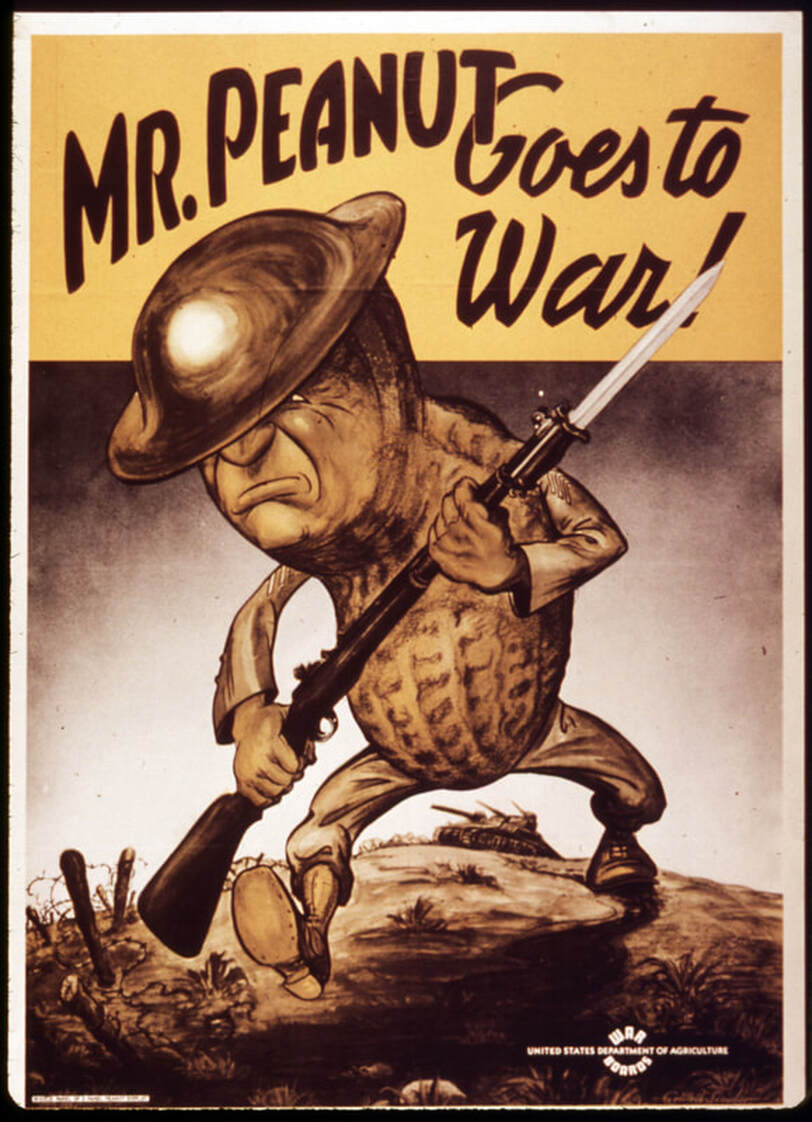
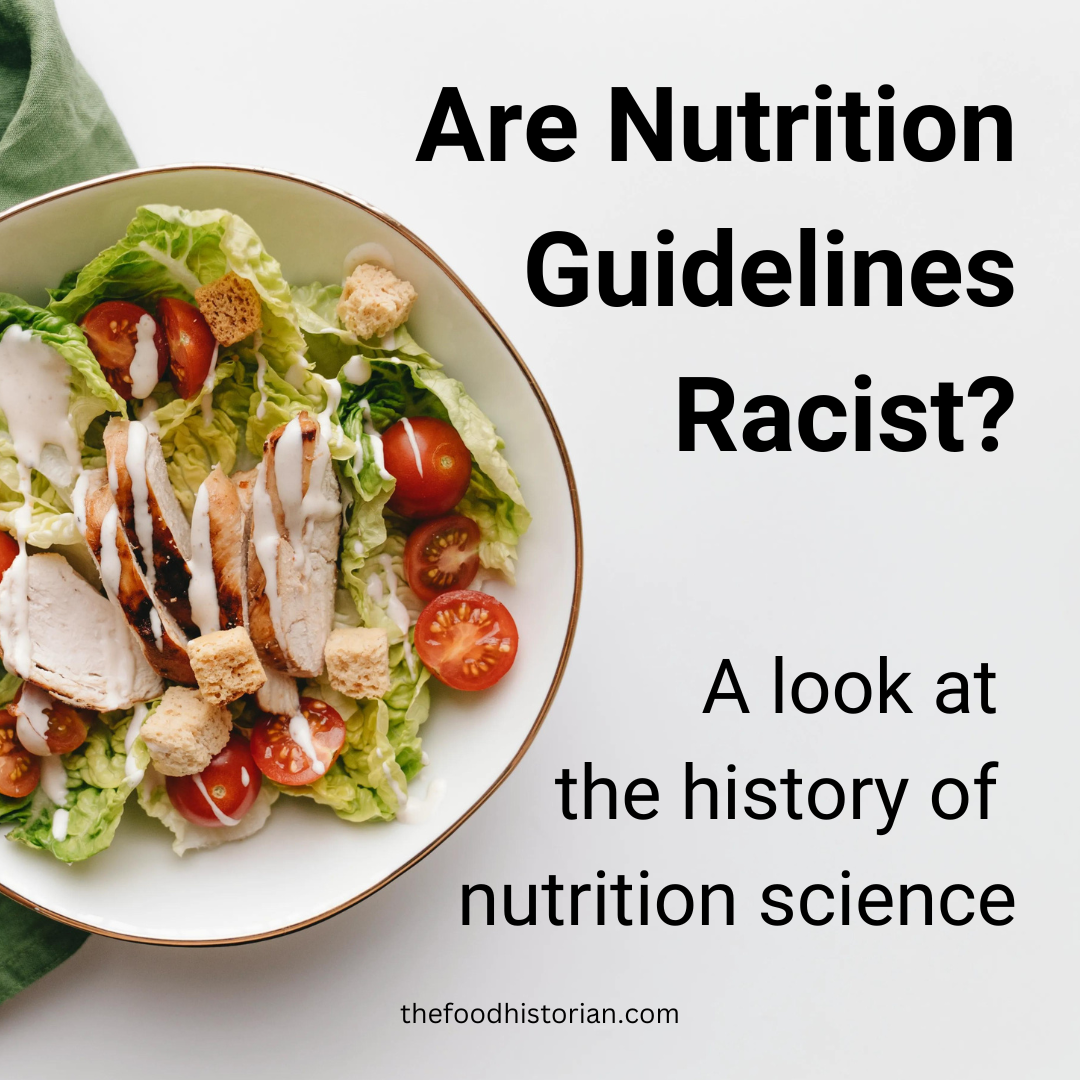
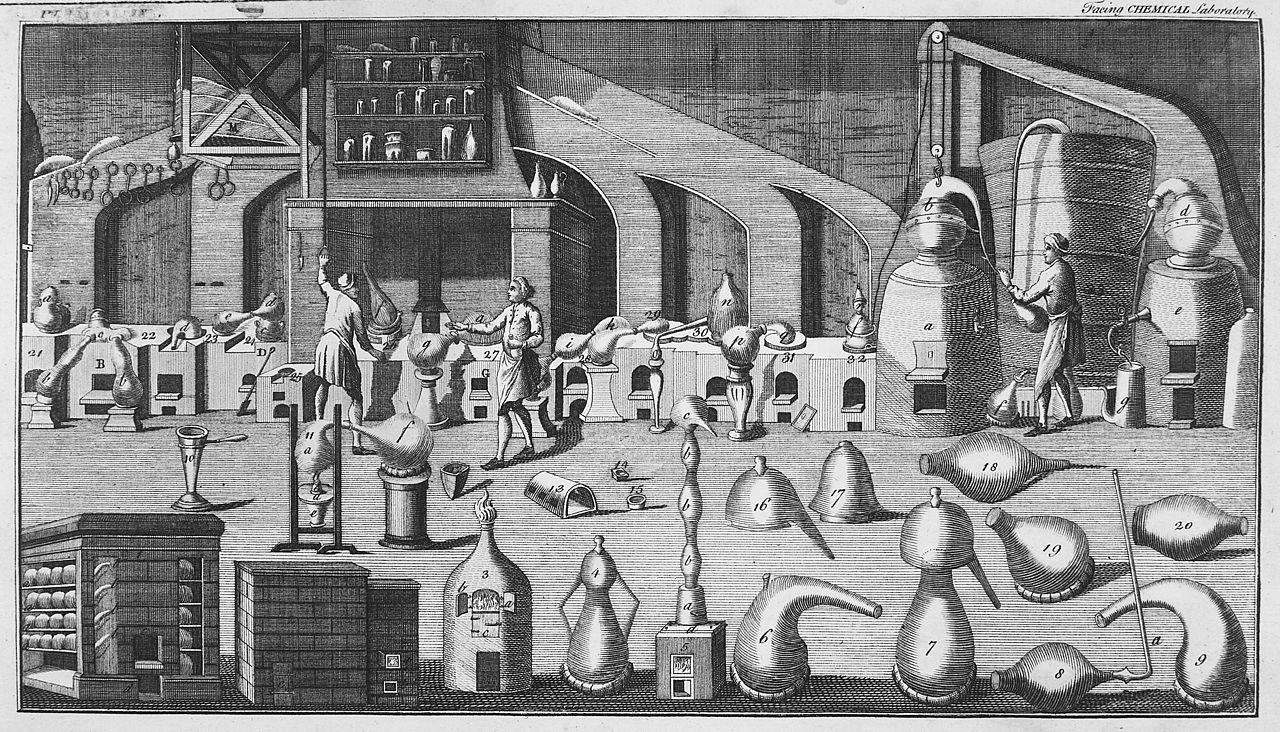
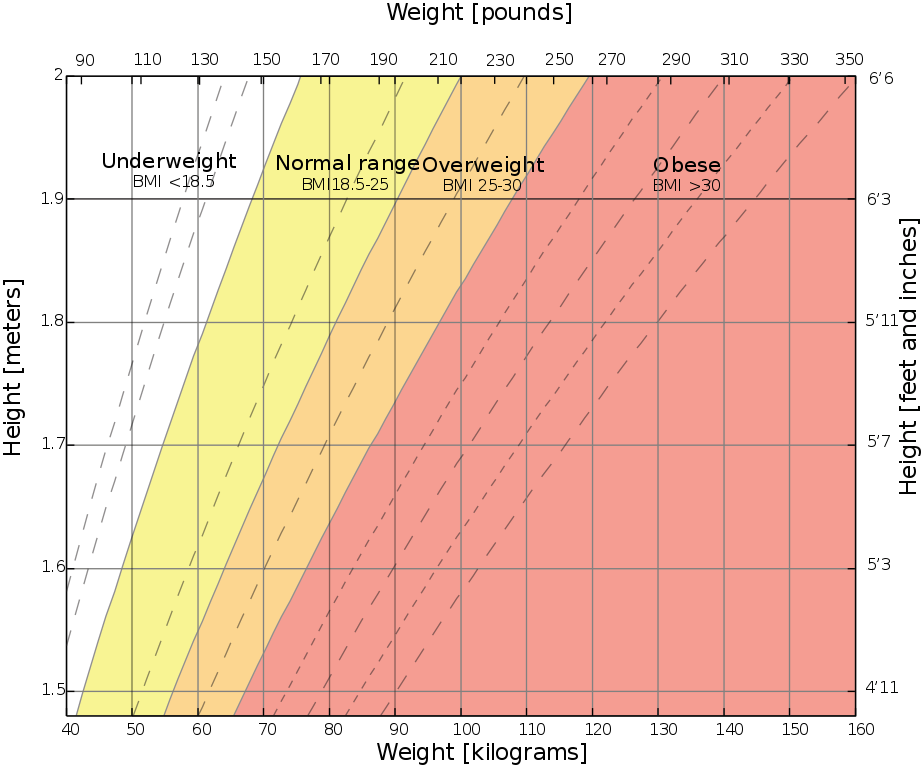
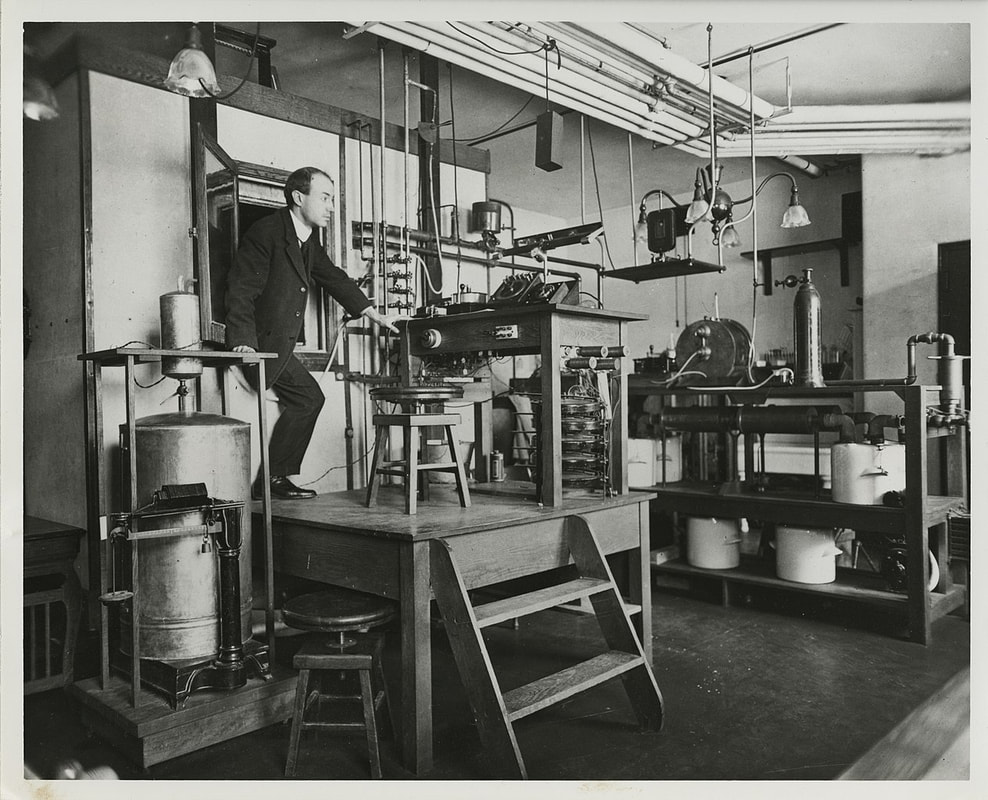
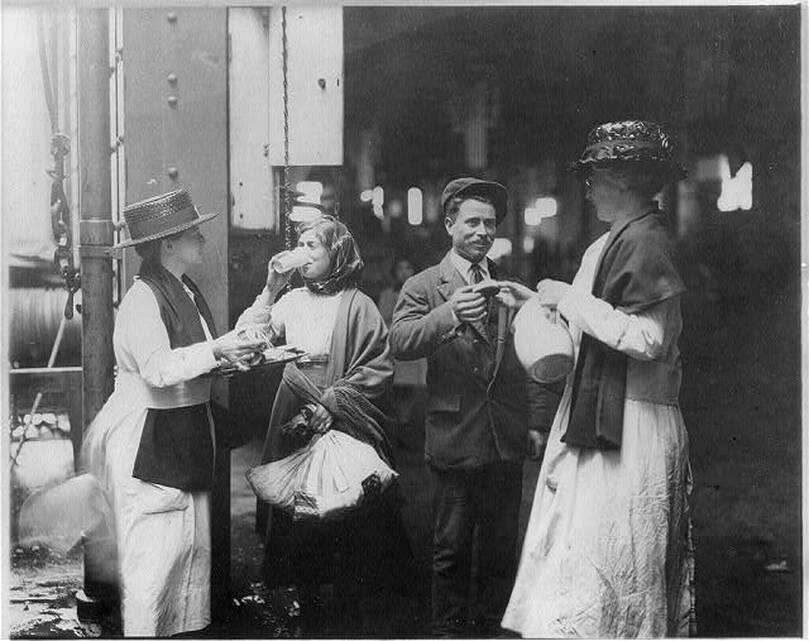
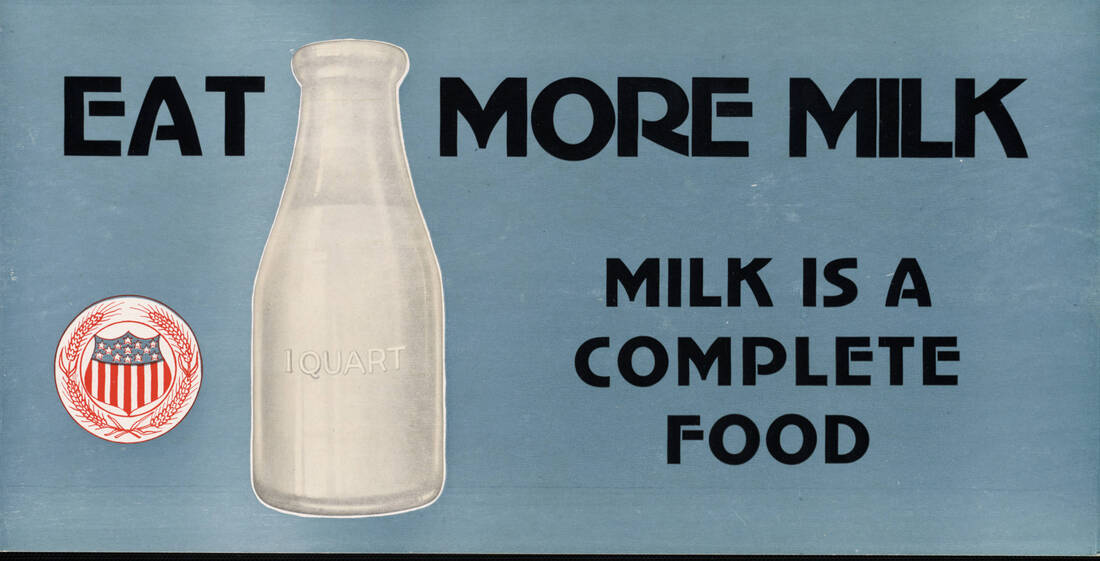
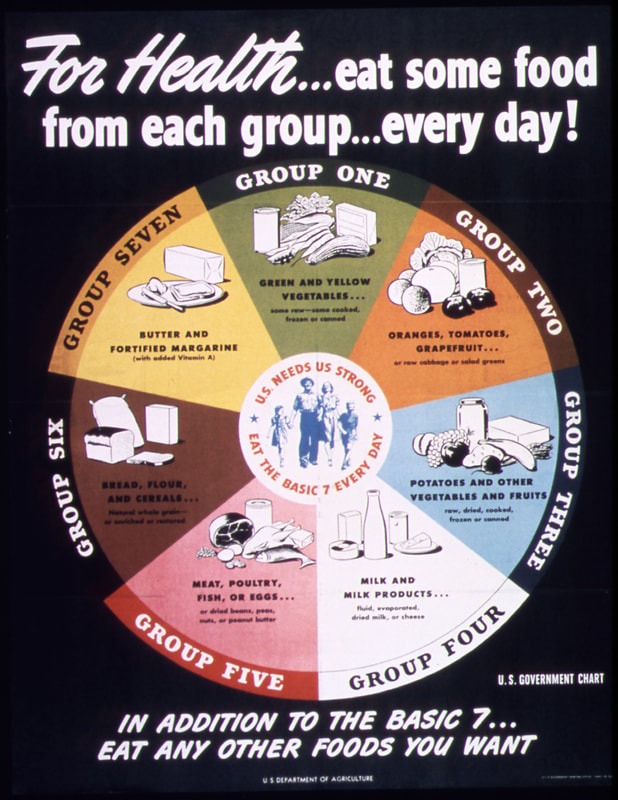
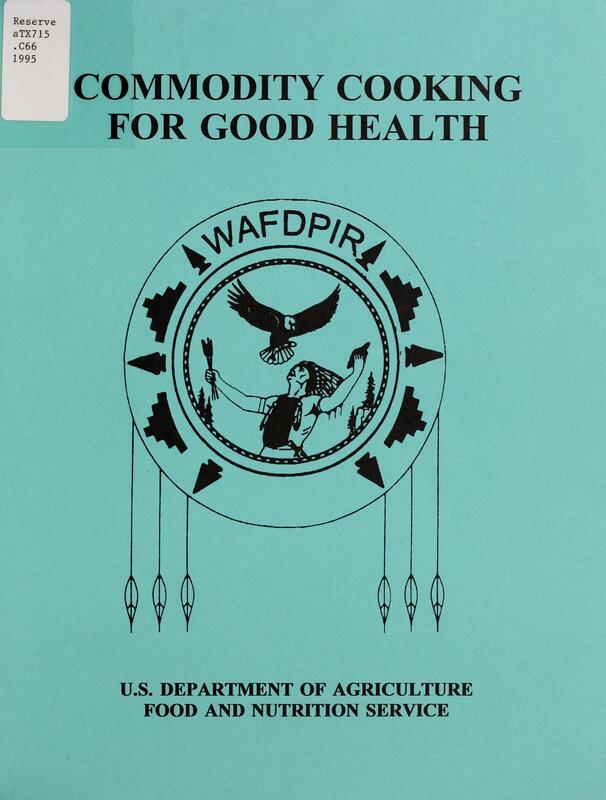
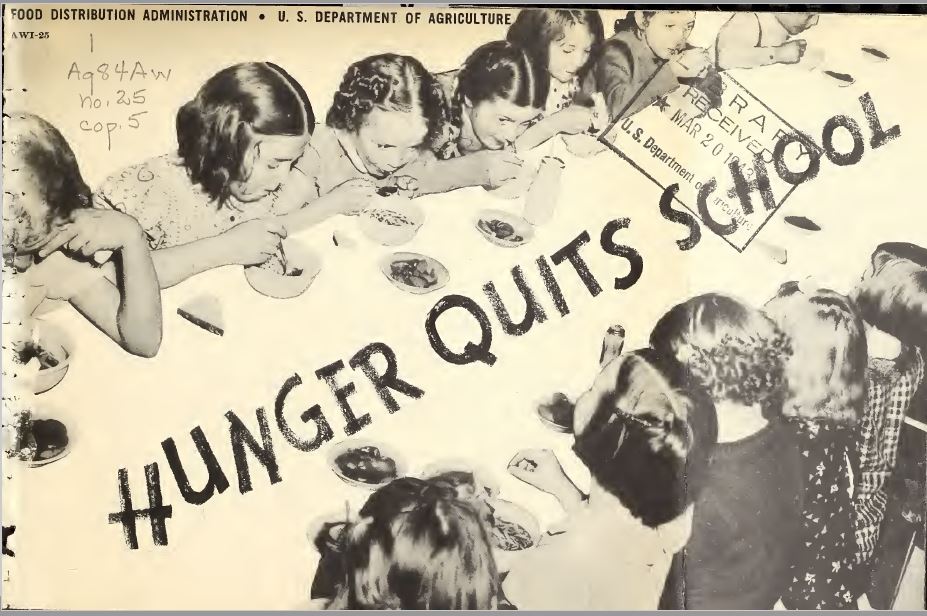


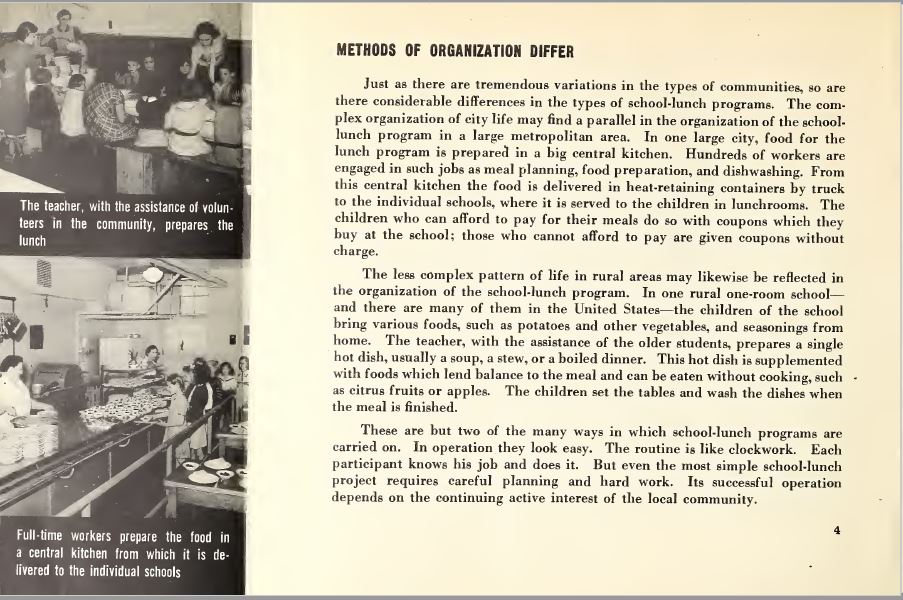

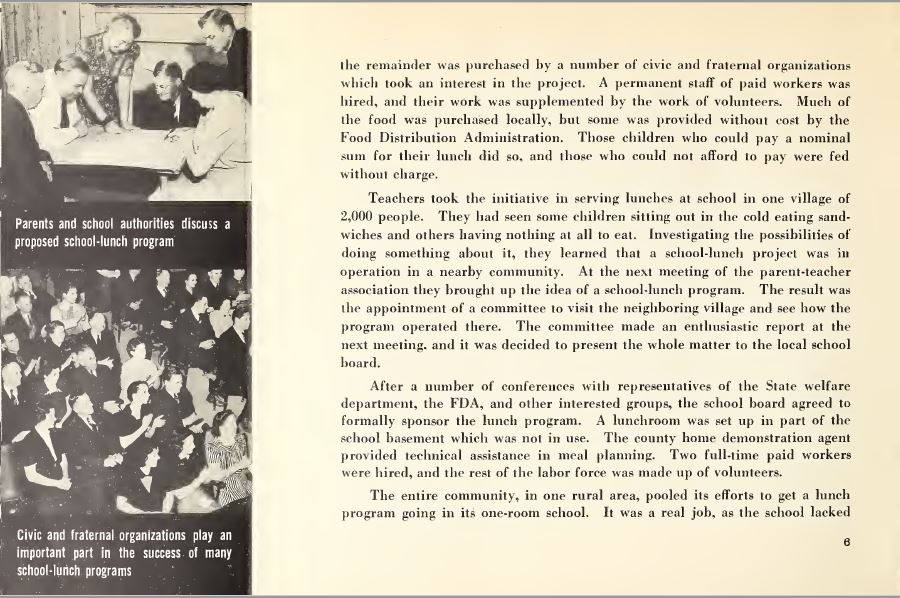
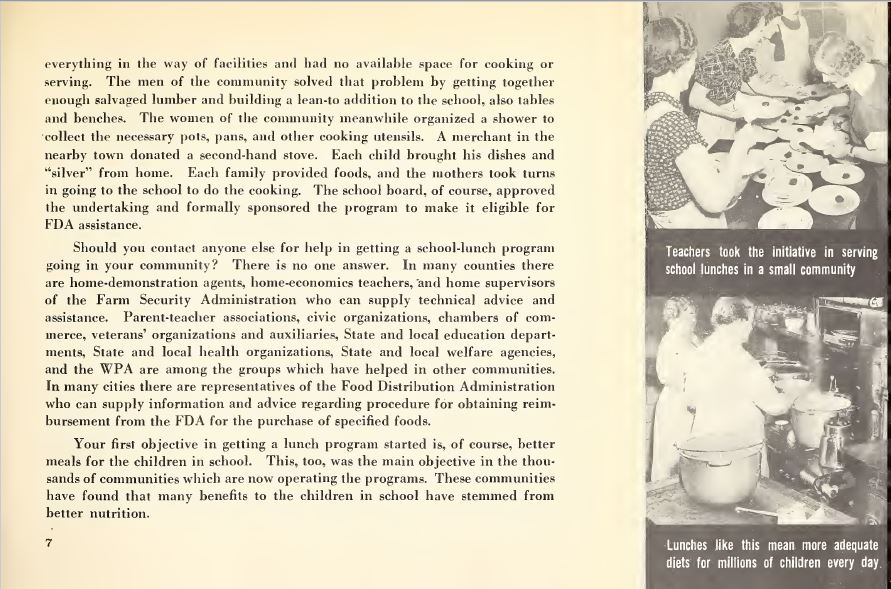

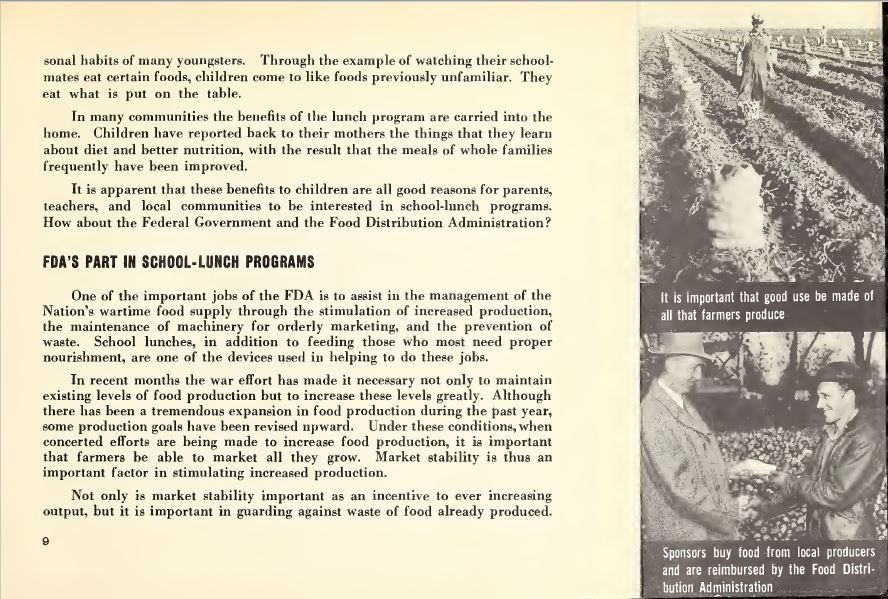
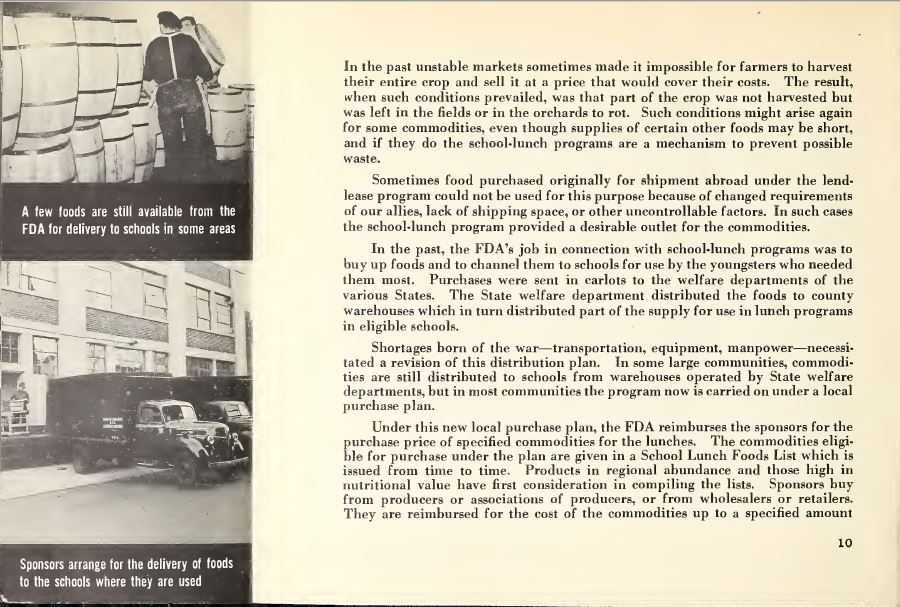
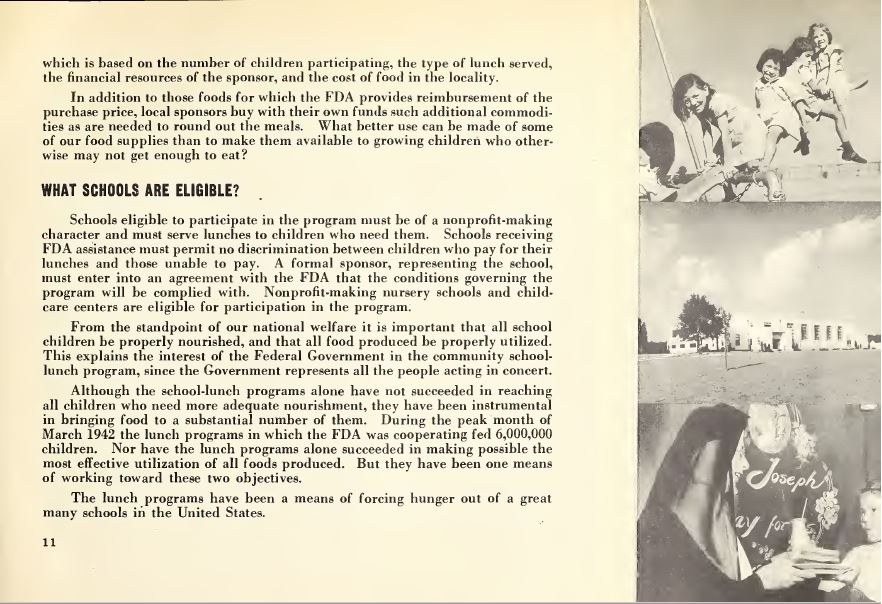
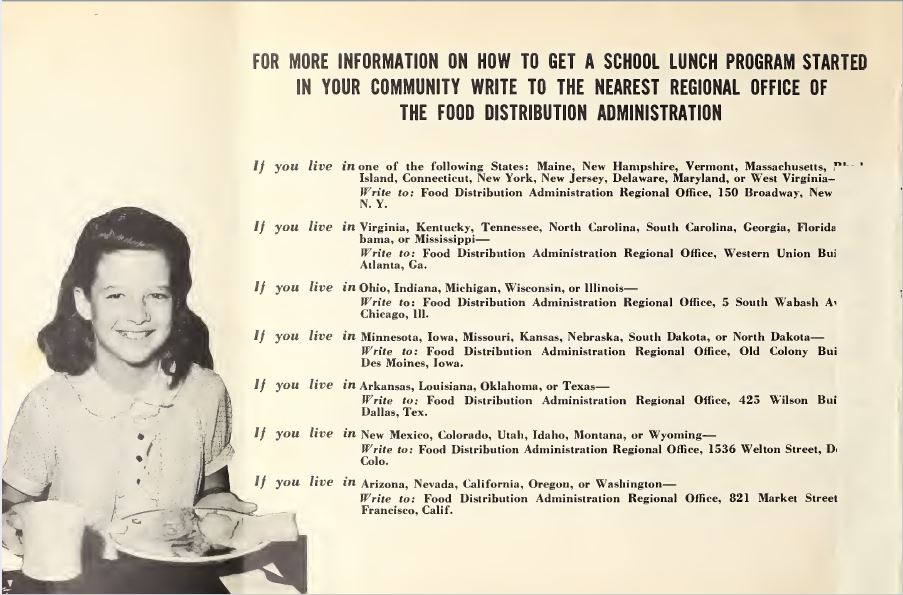

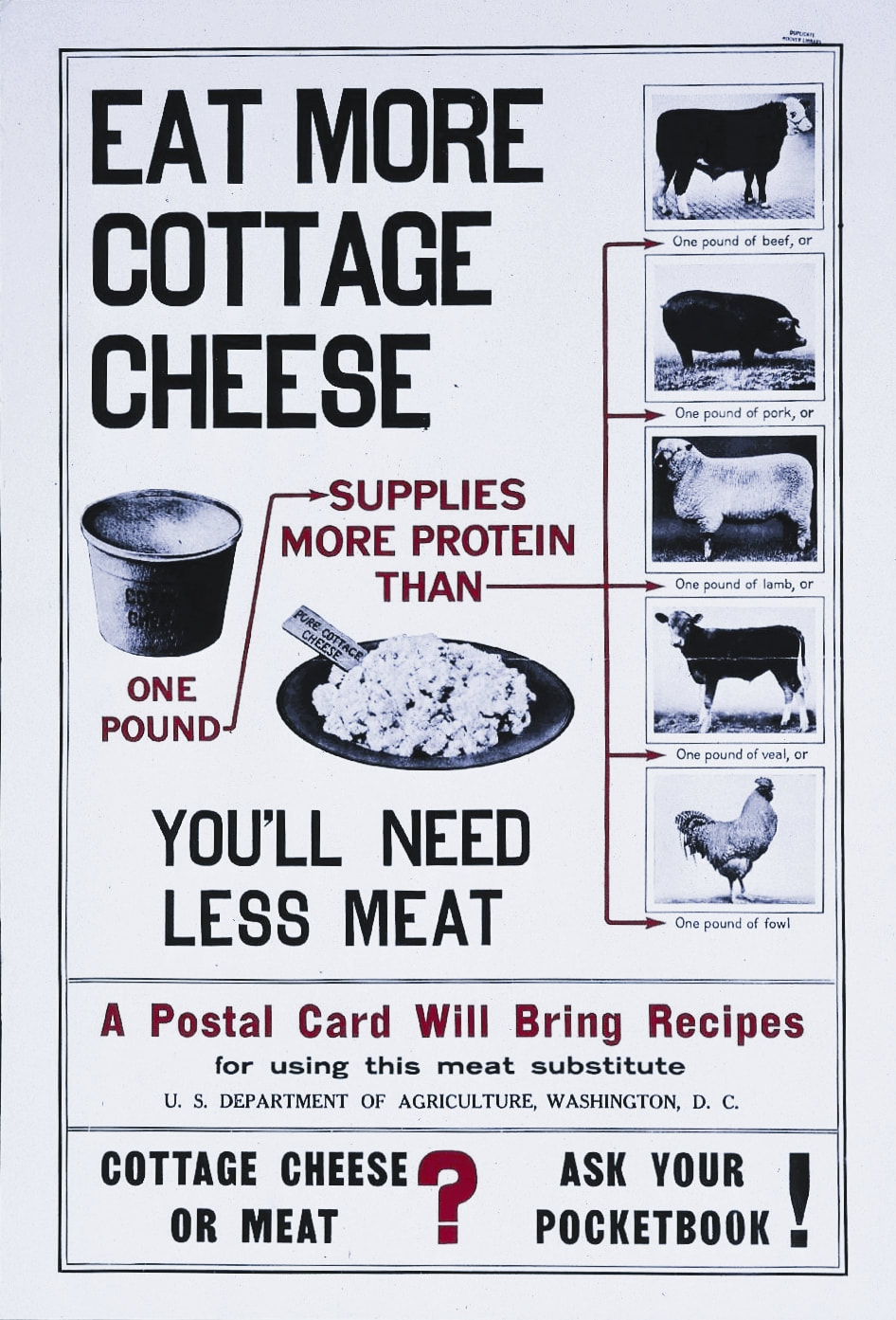

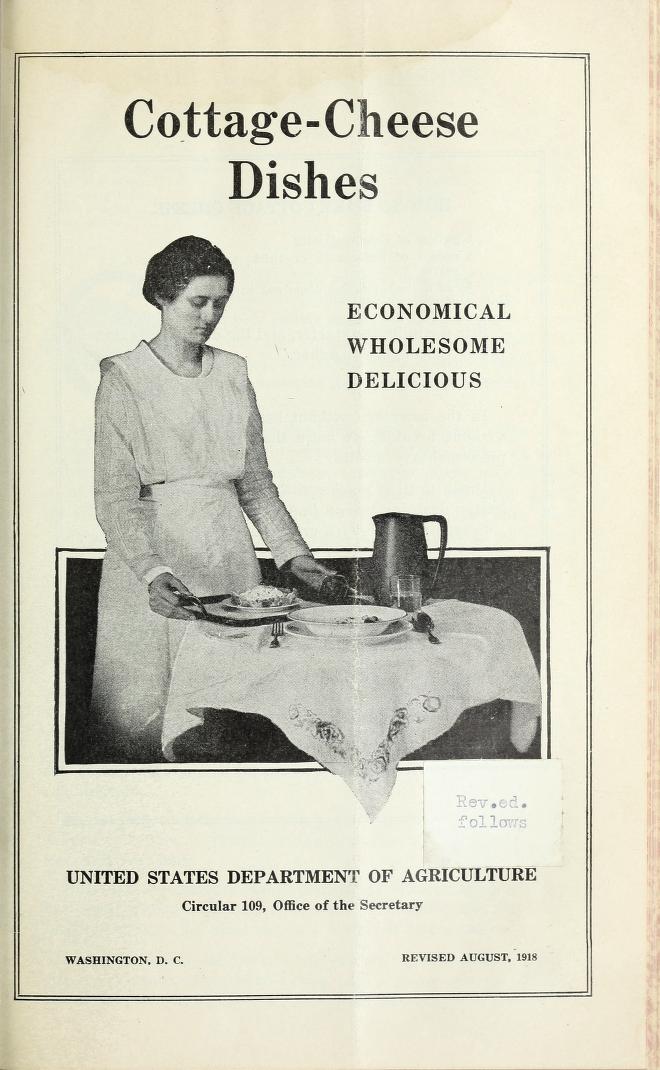
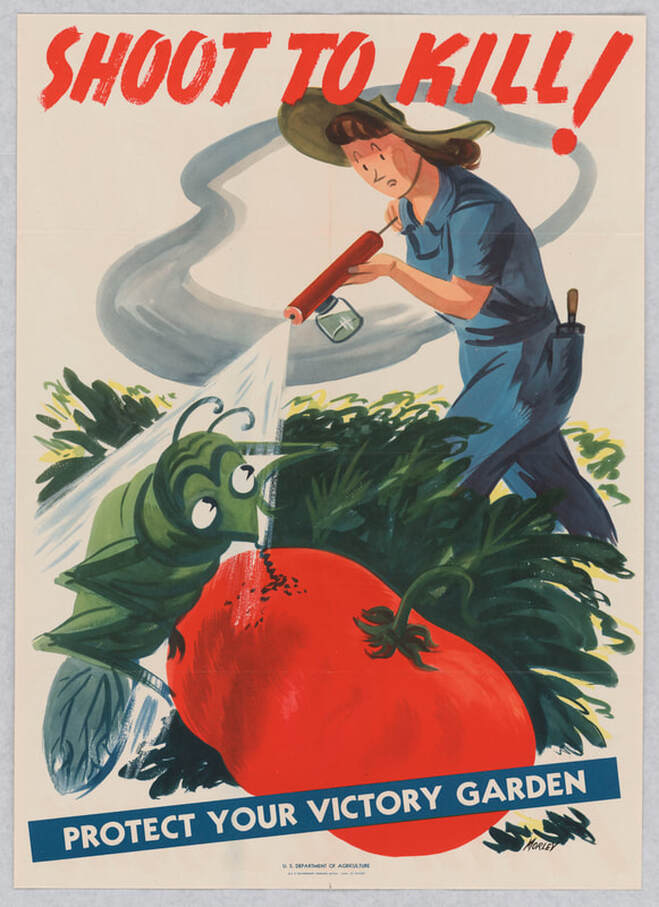
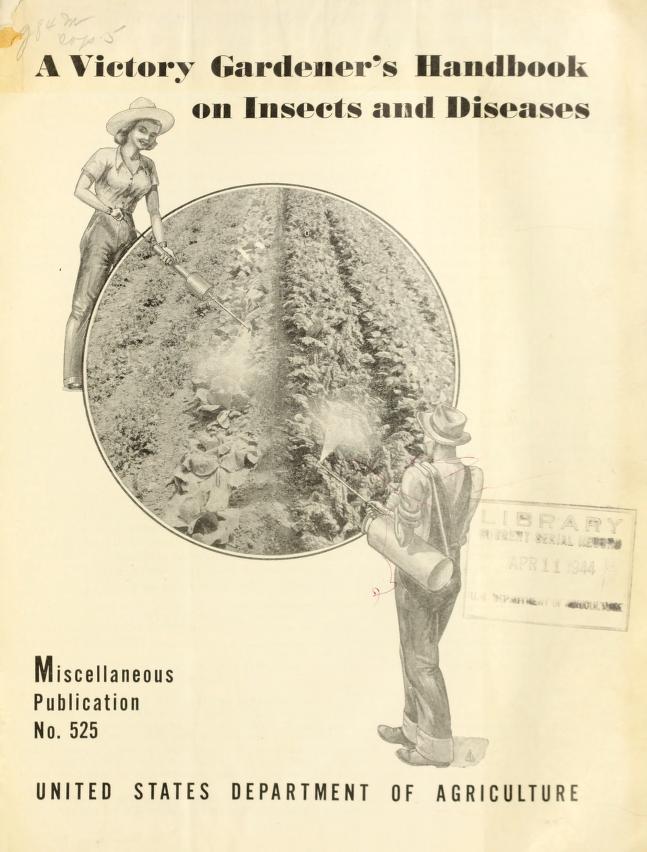
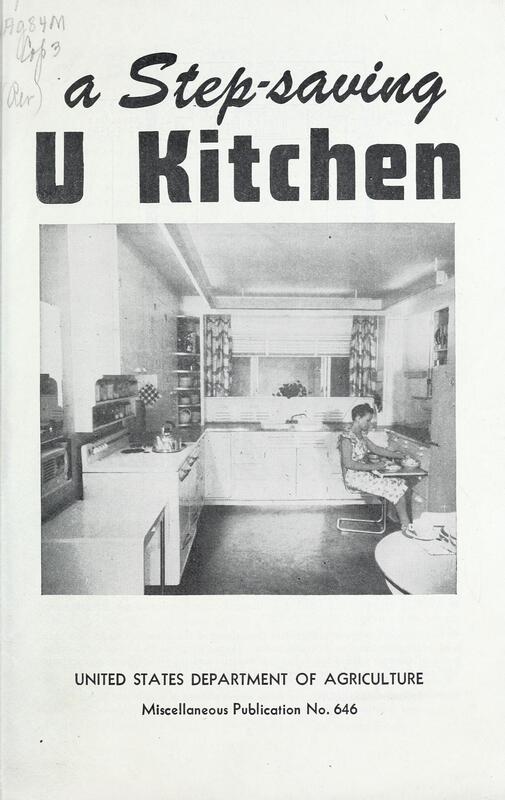
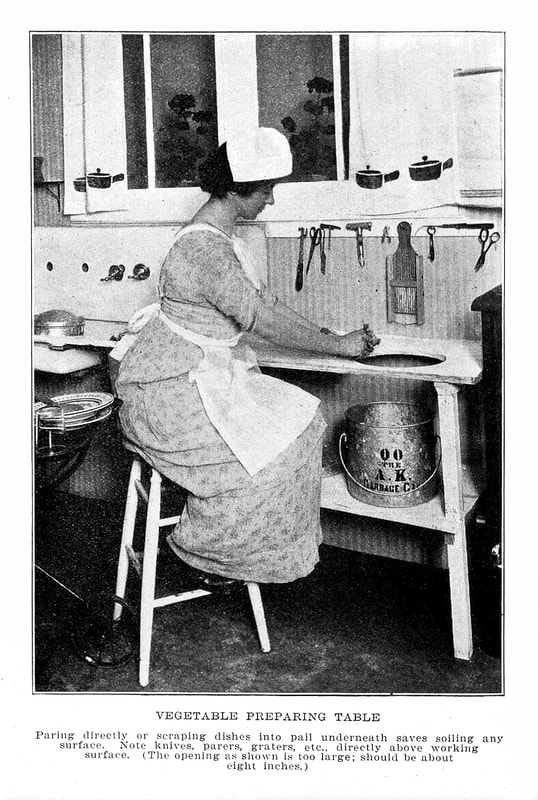
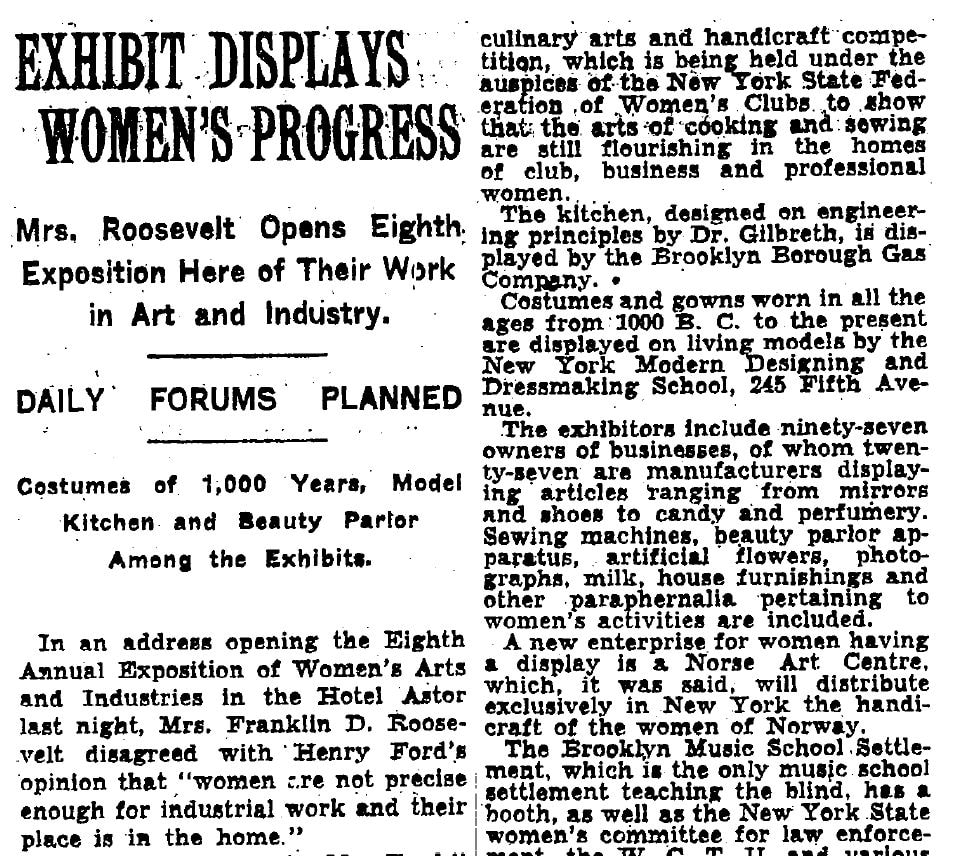

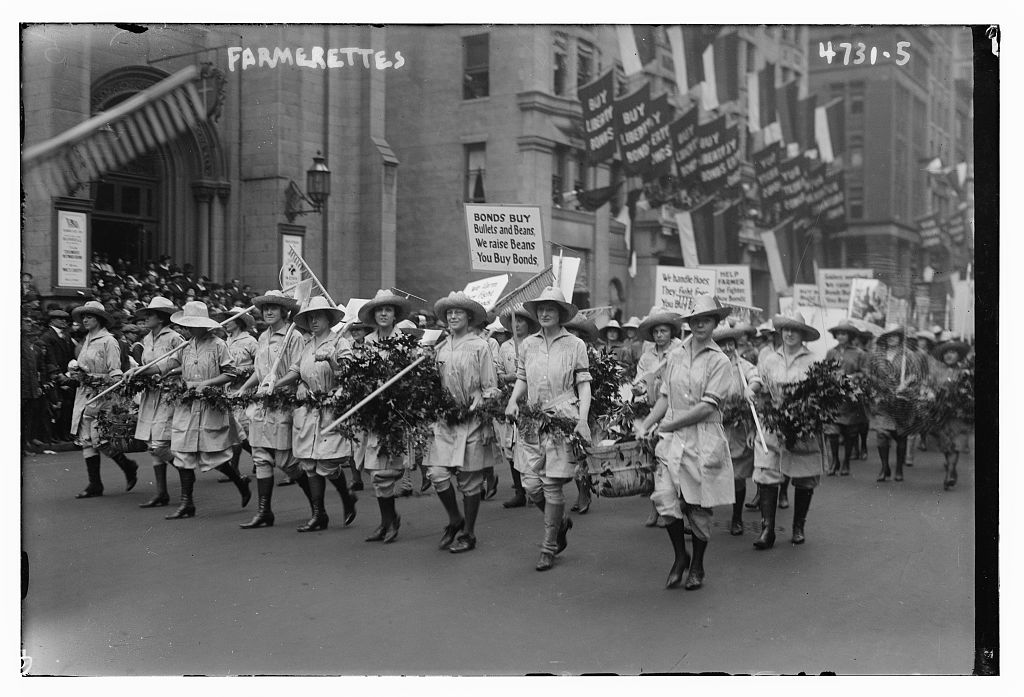

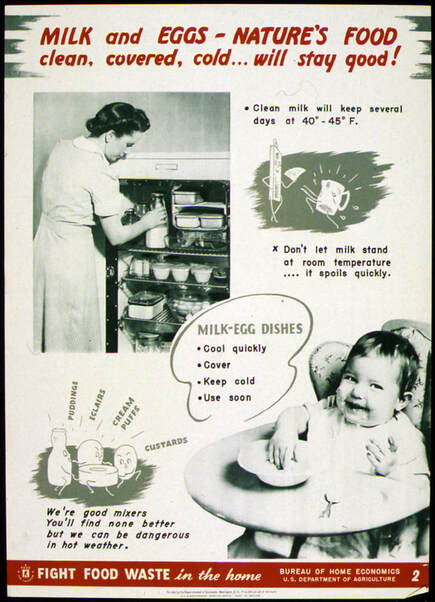
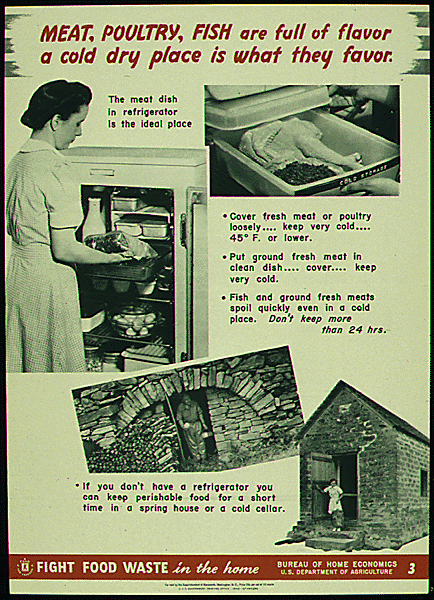
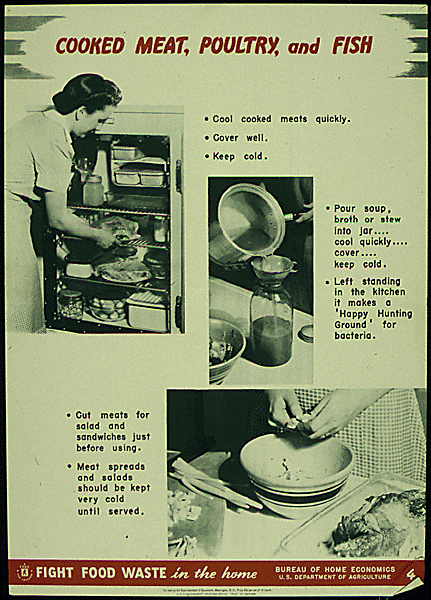
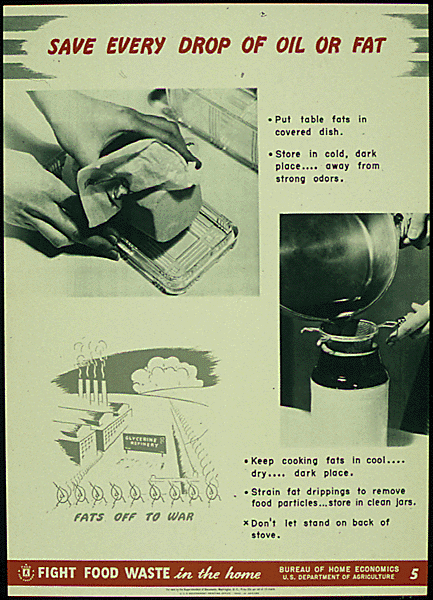
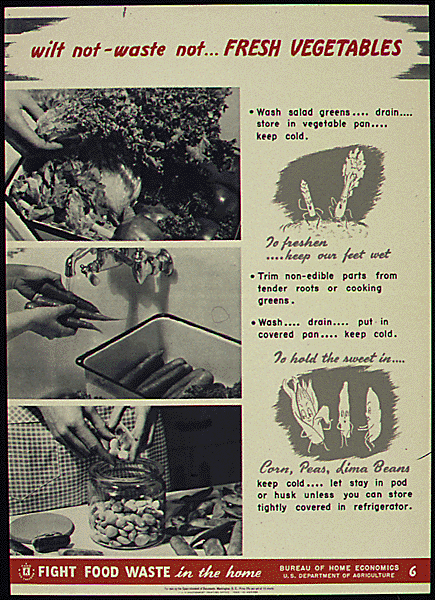
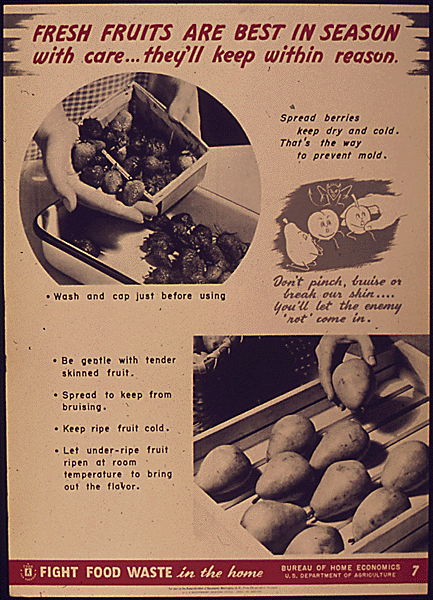
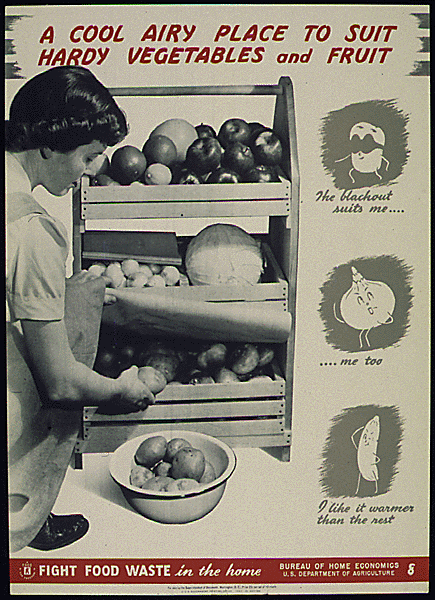
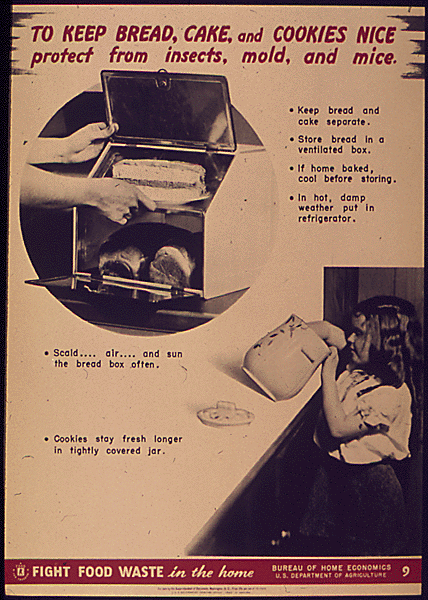
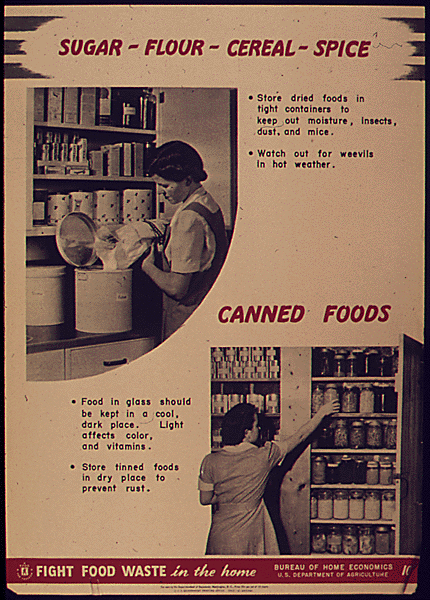
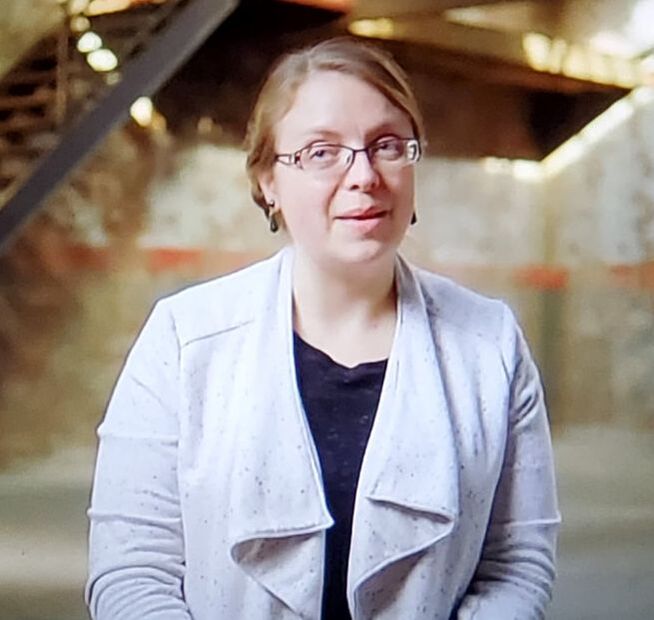
 RSS Feed
RSS Feed